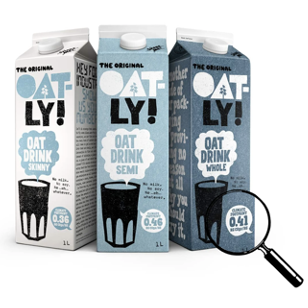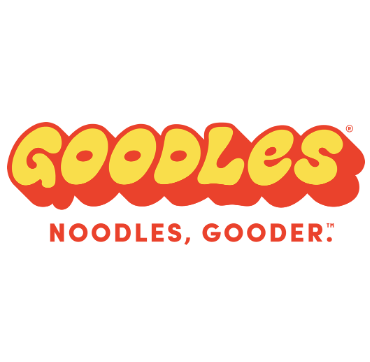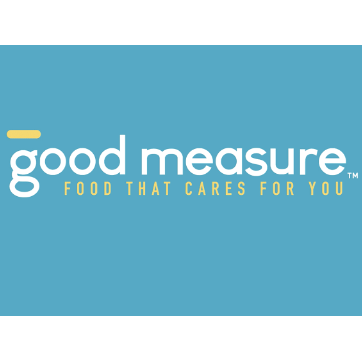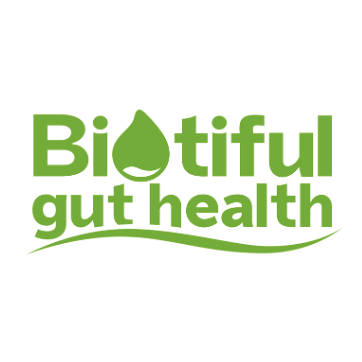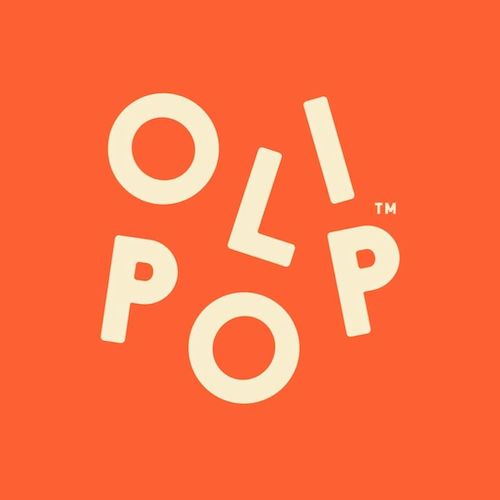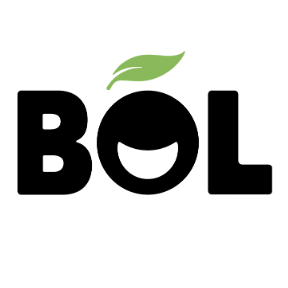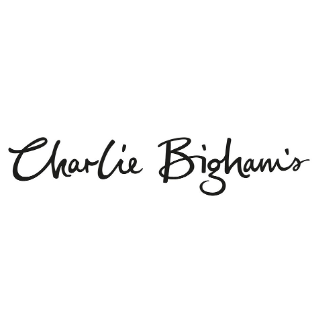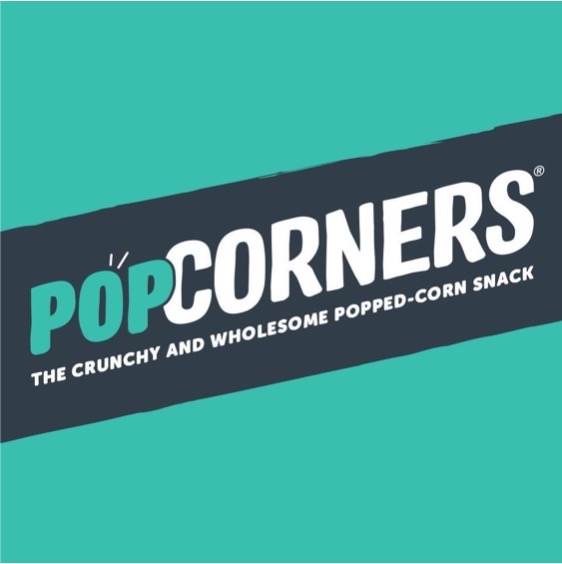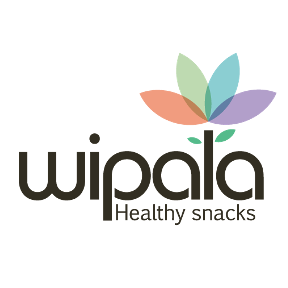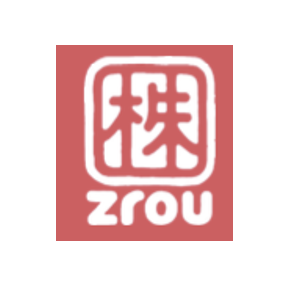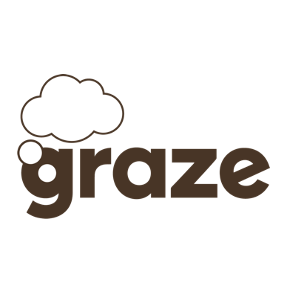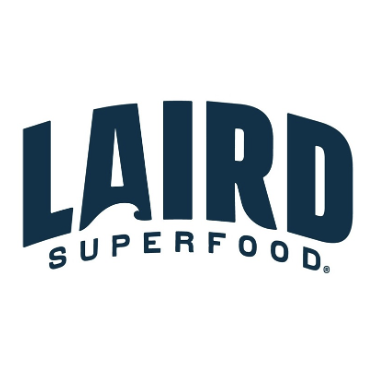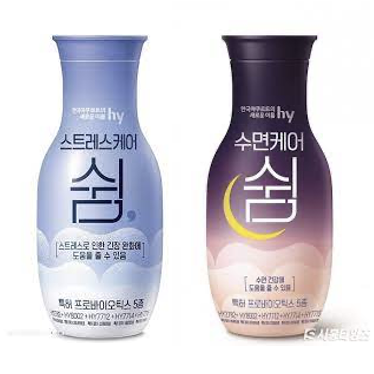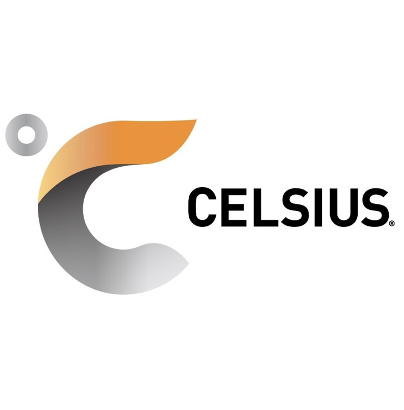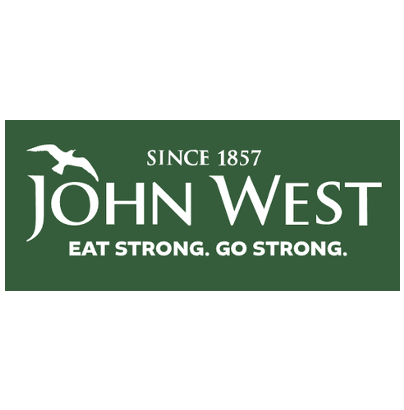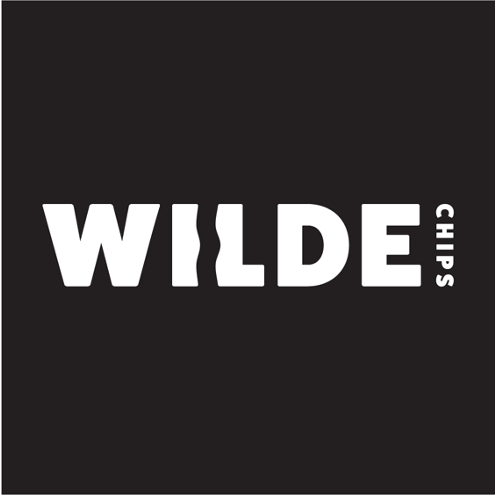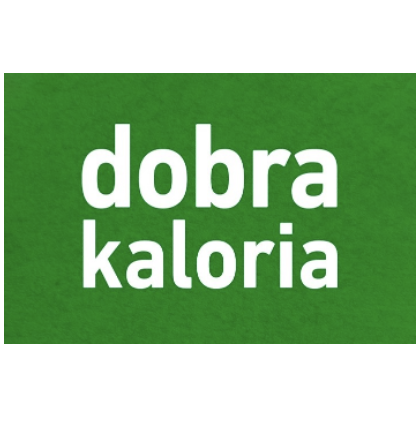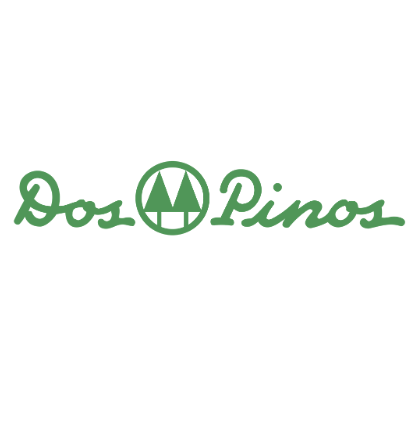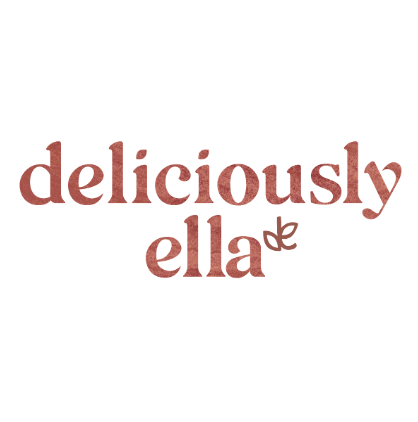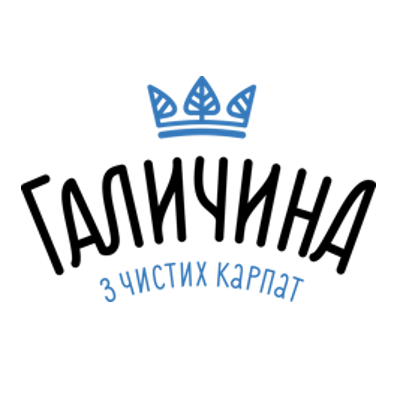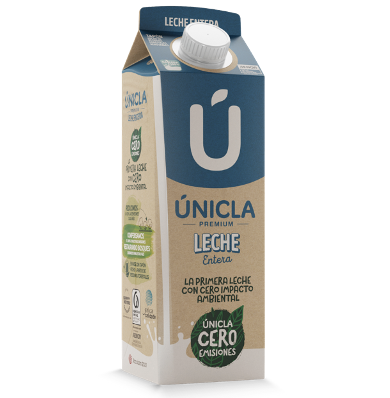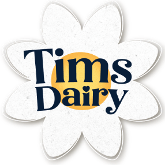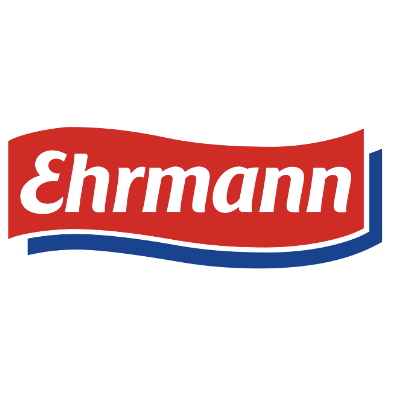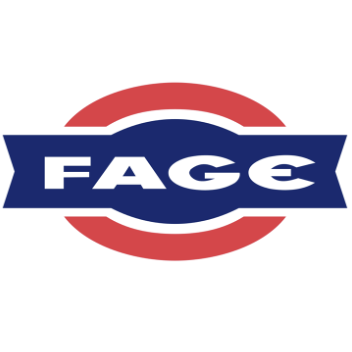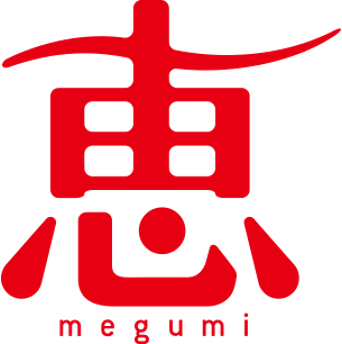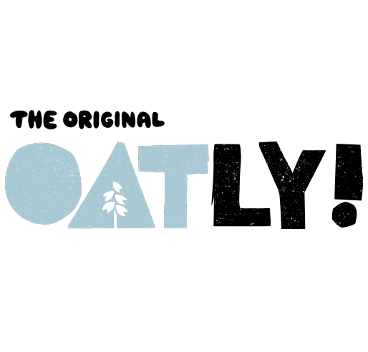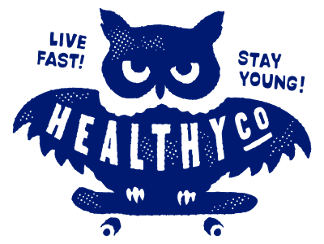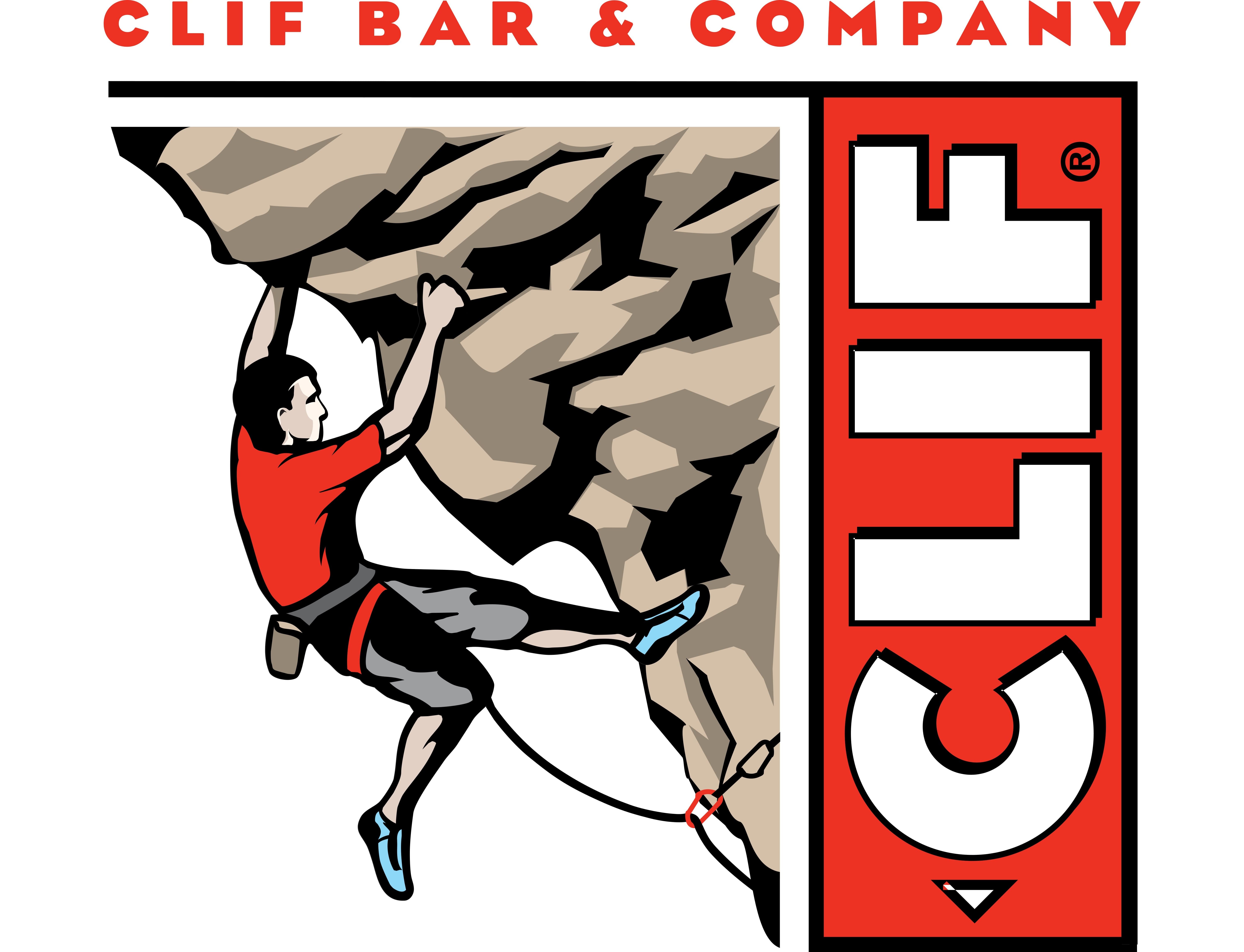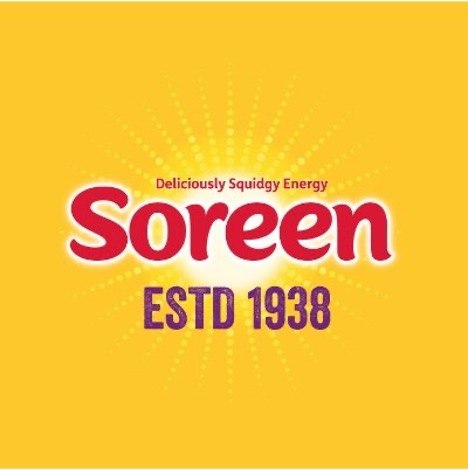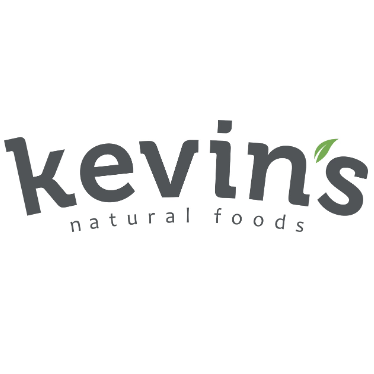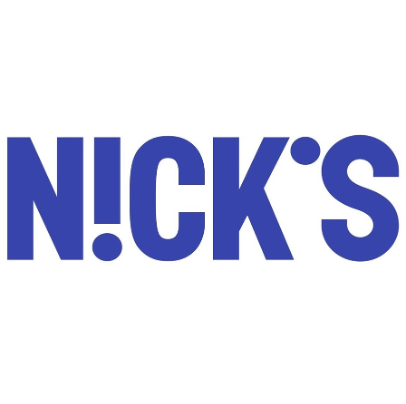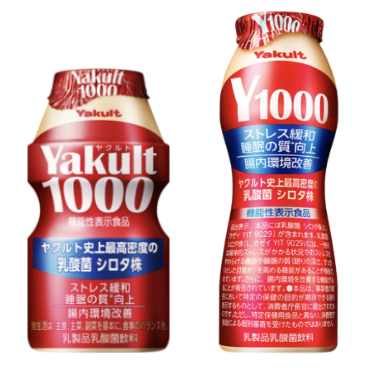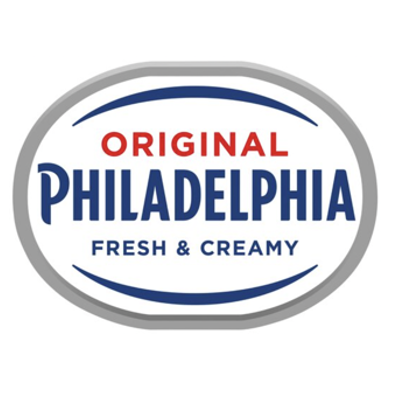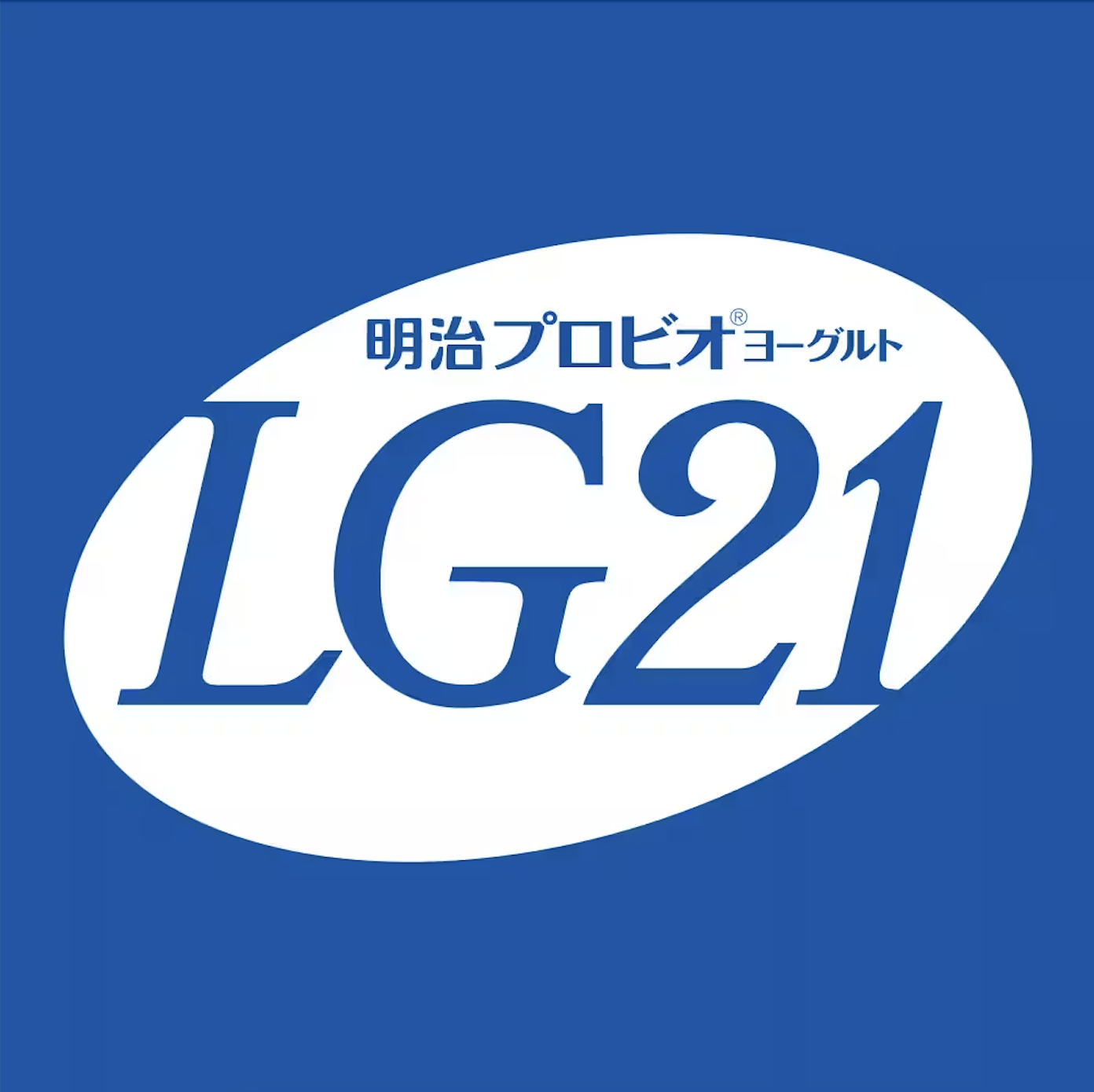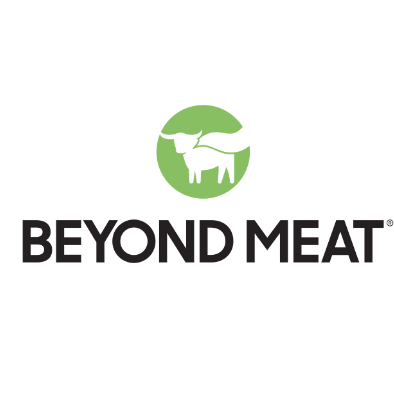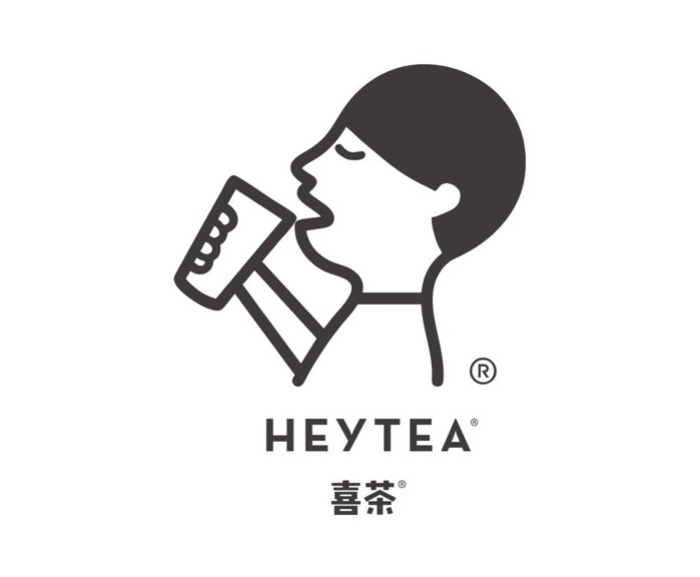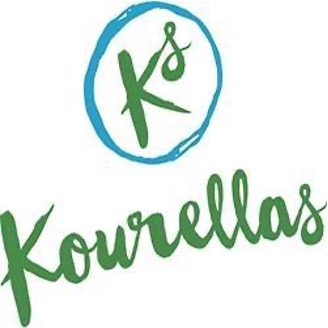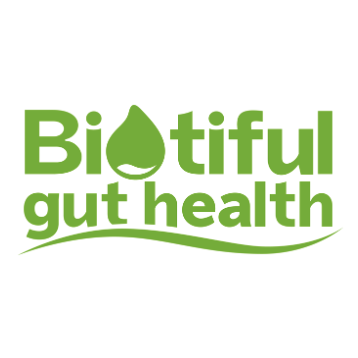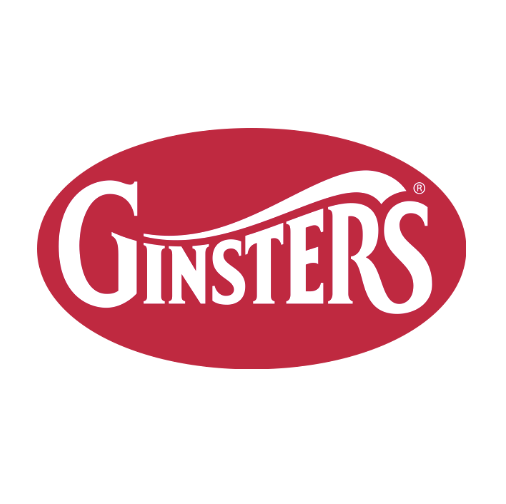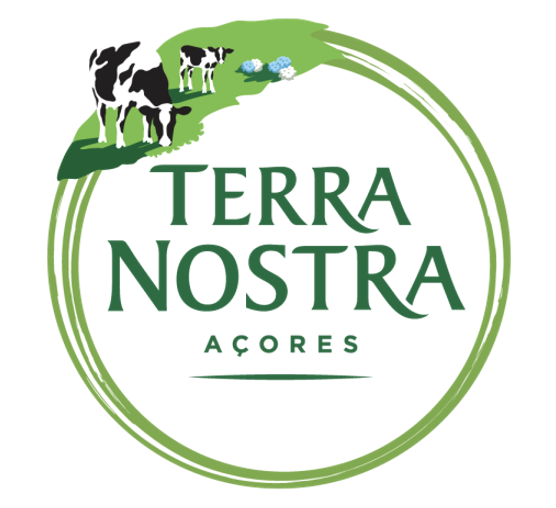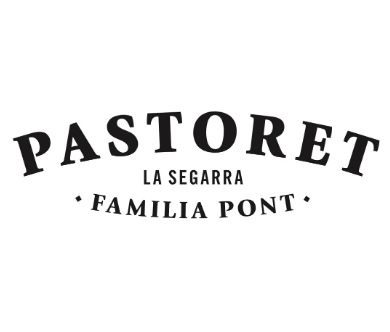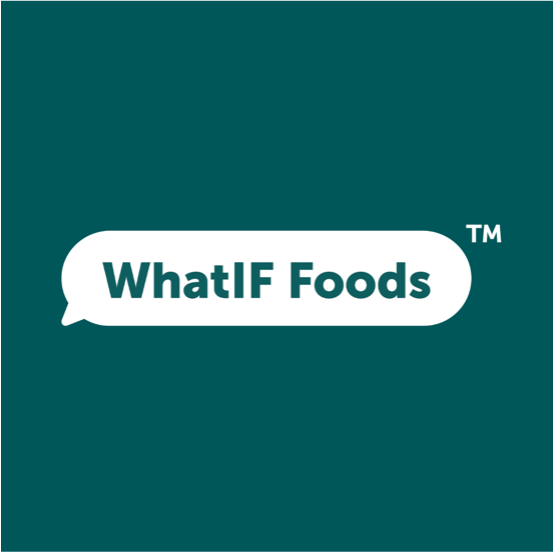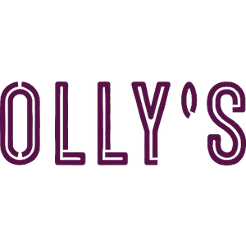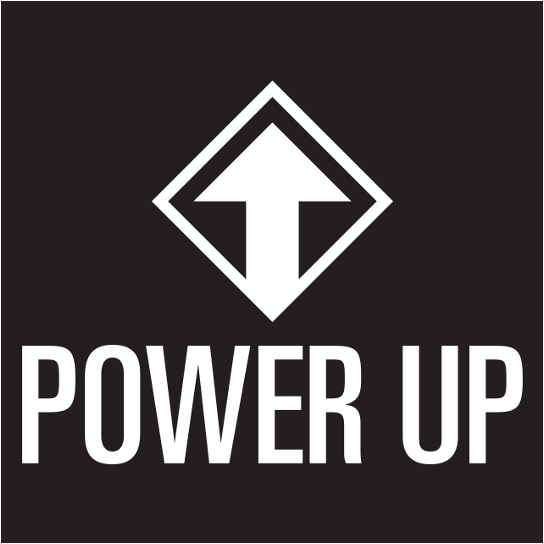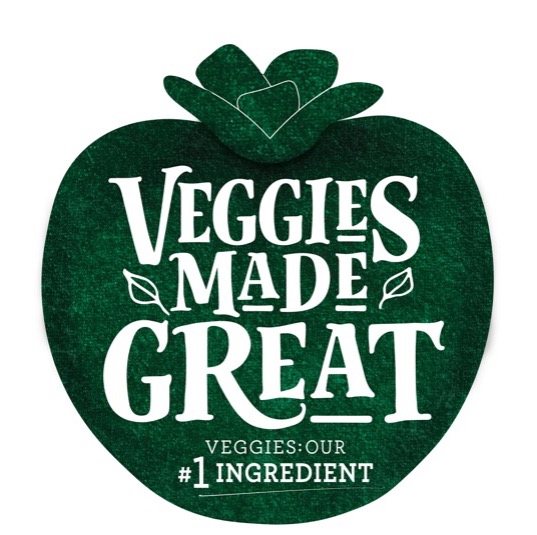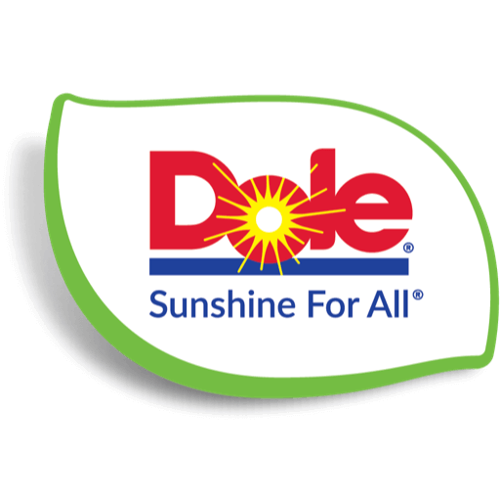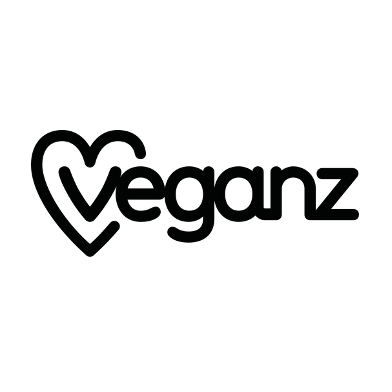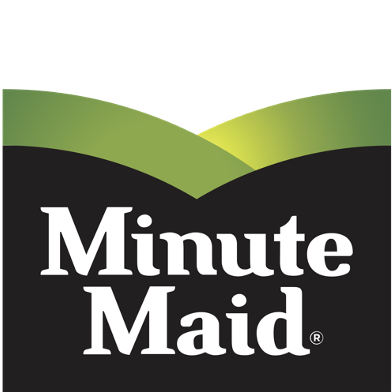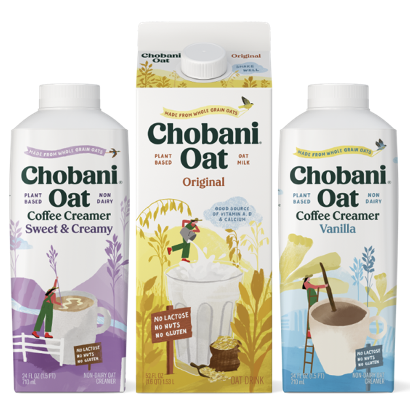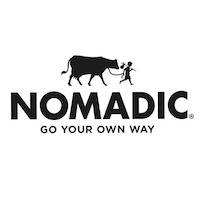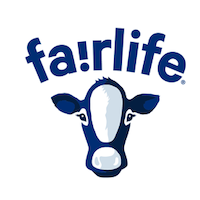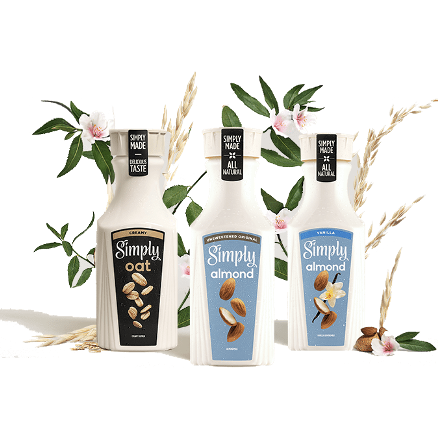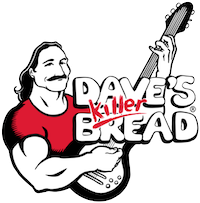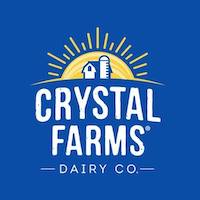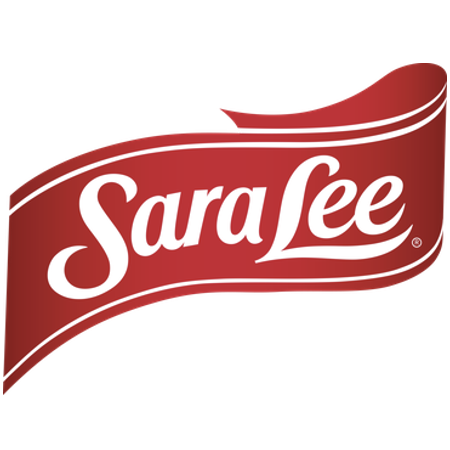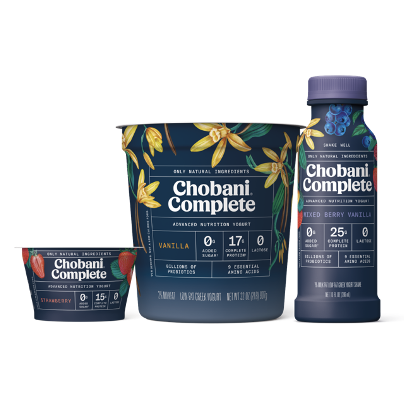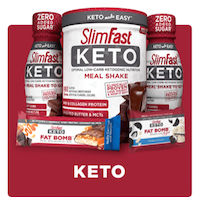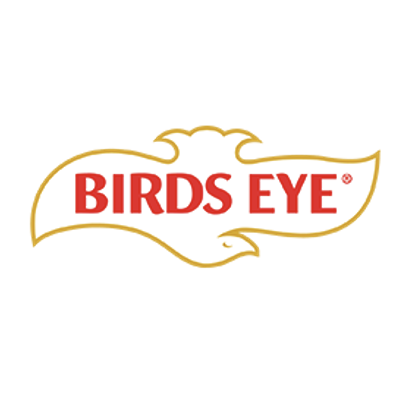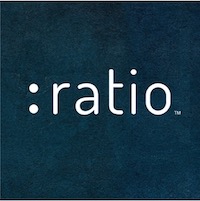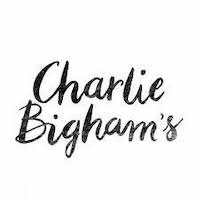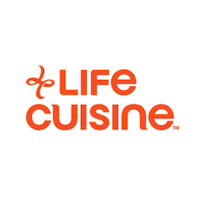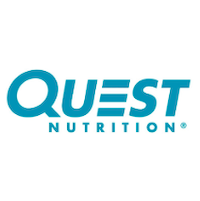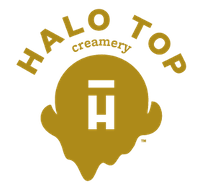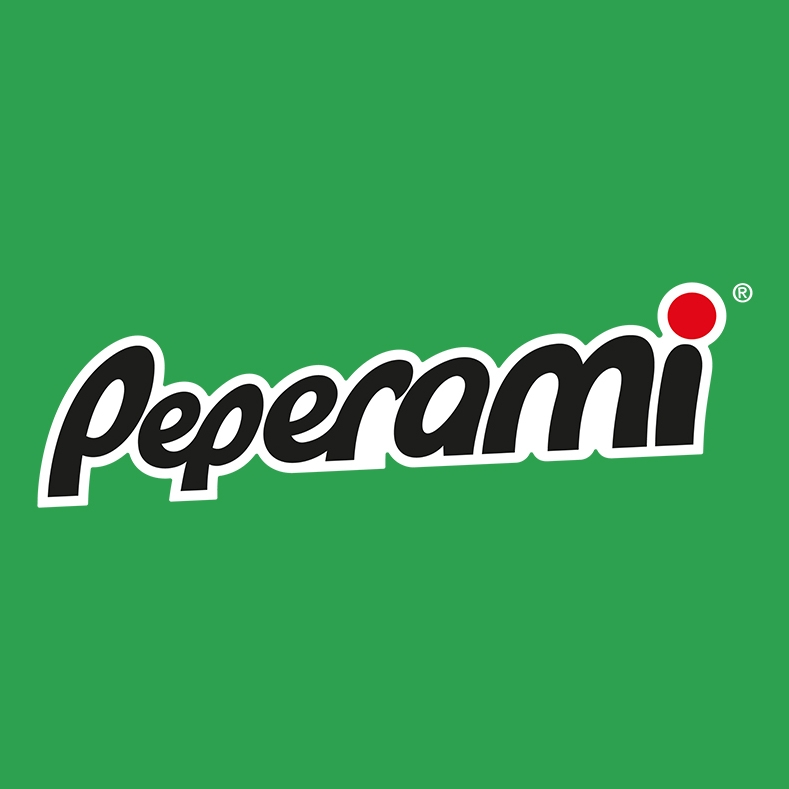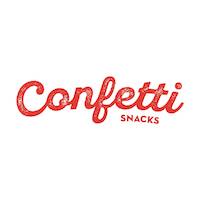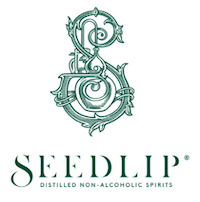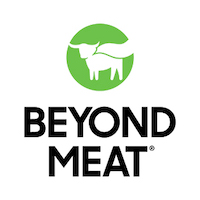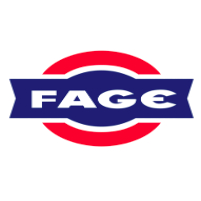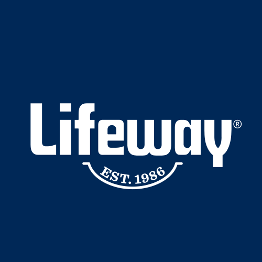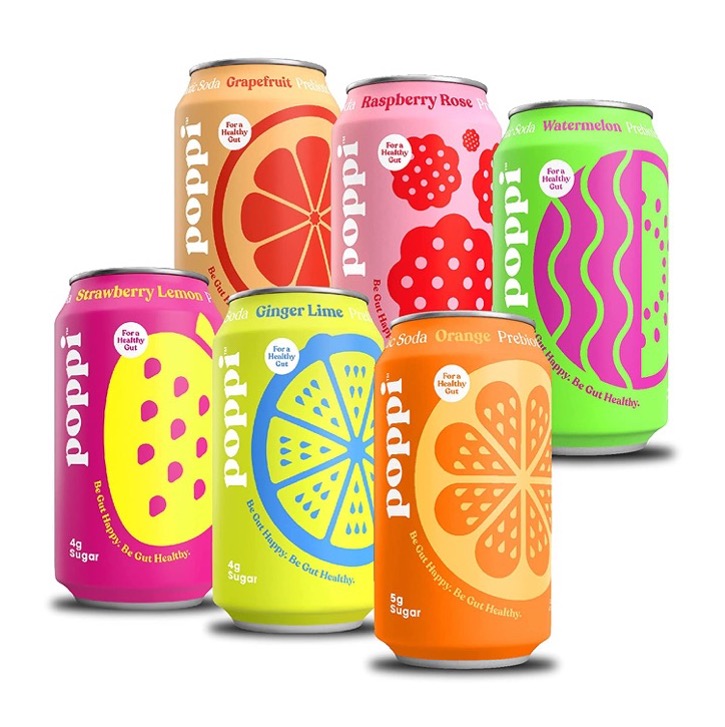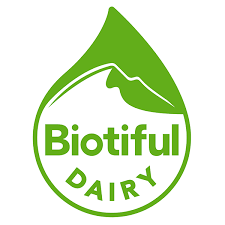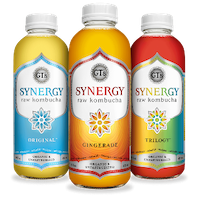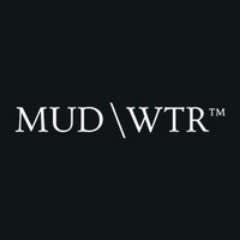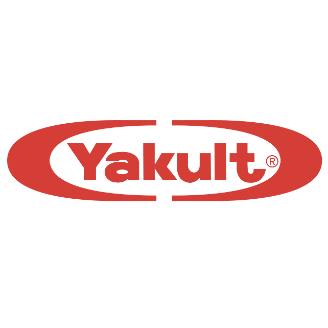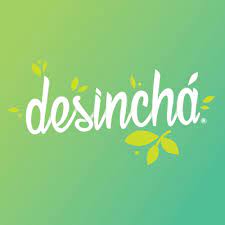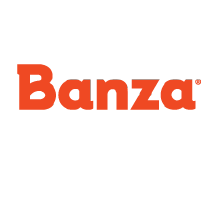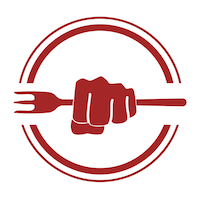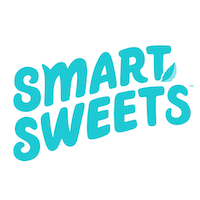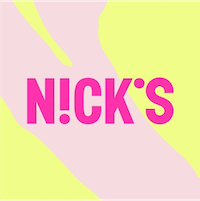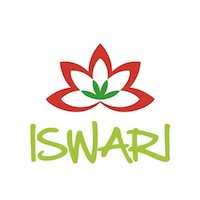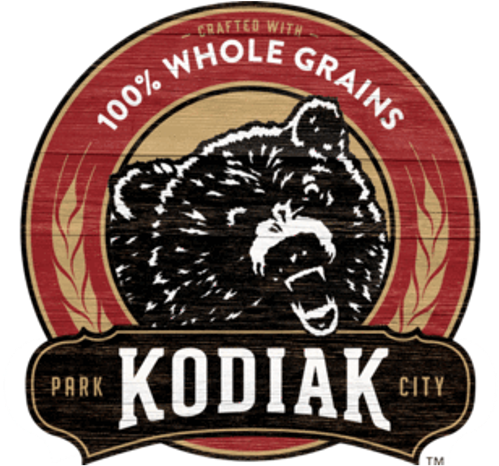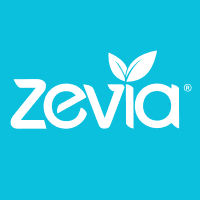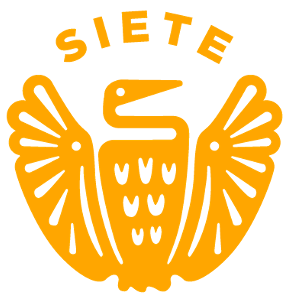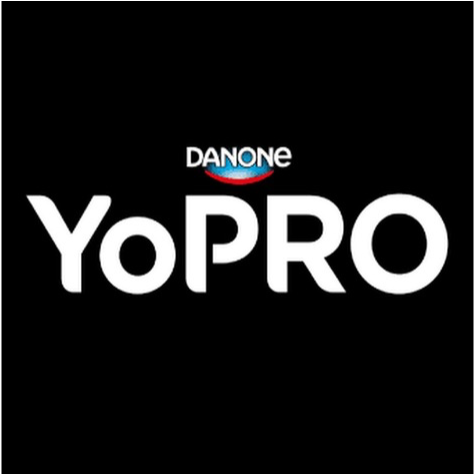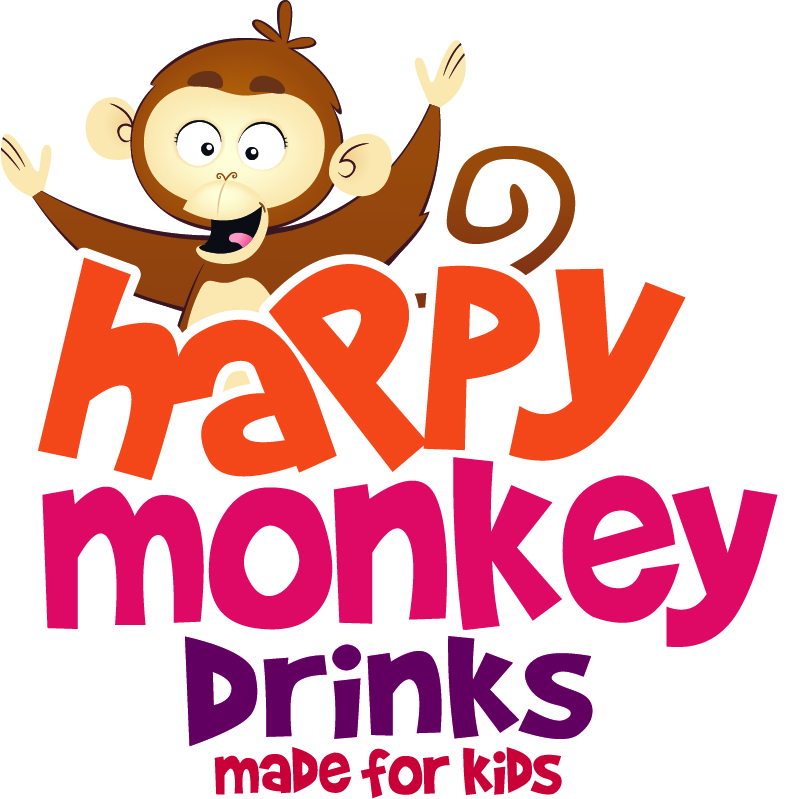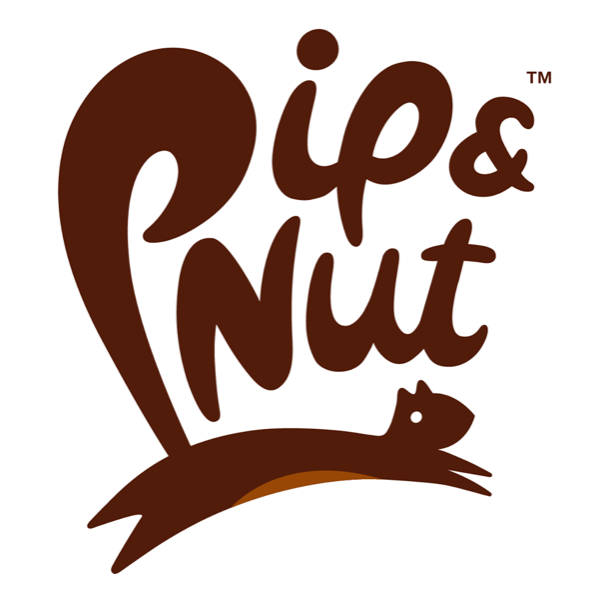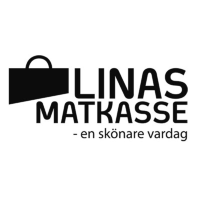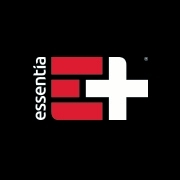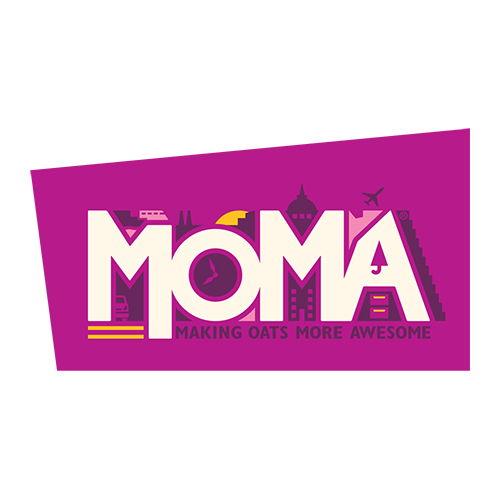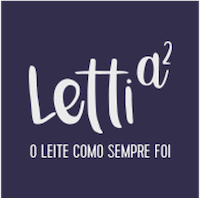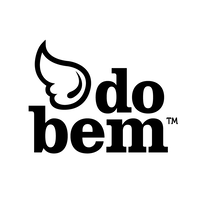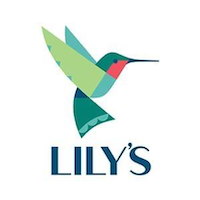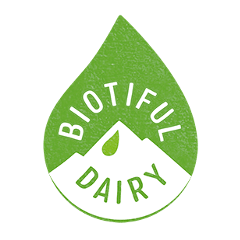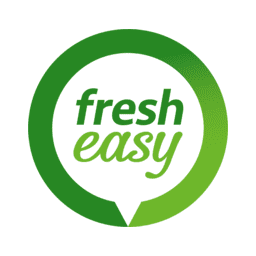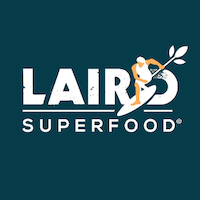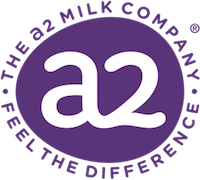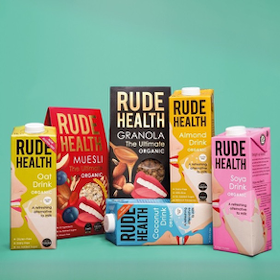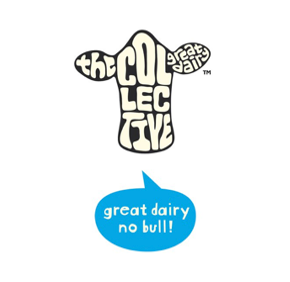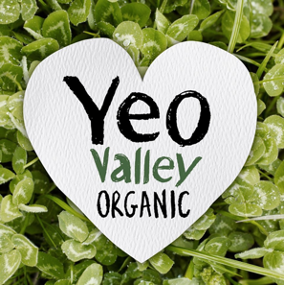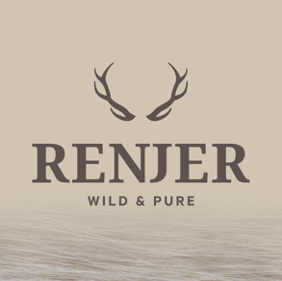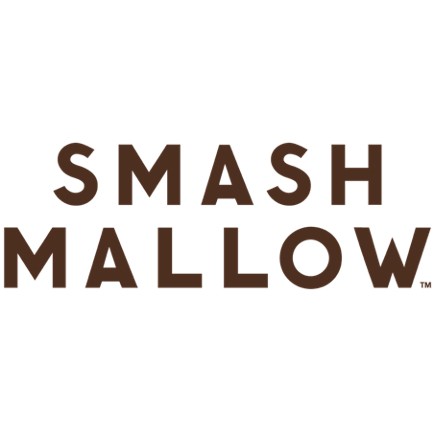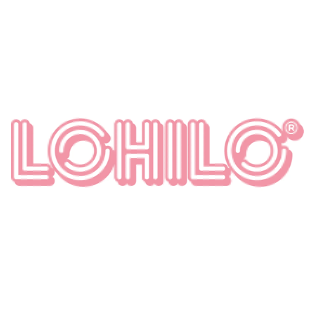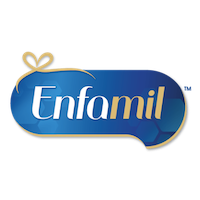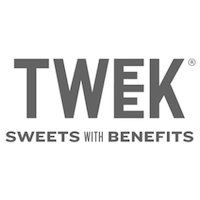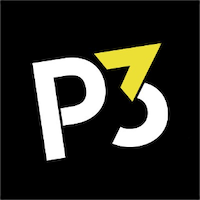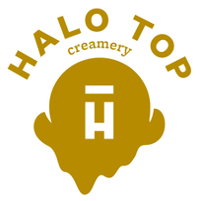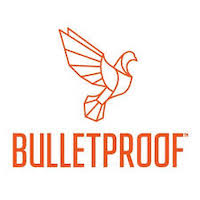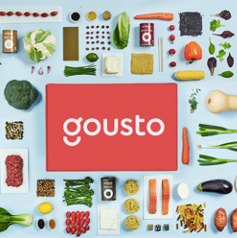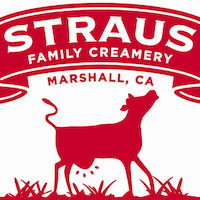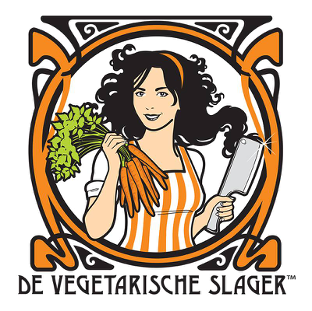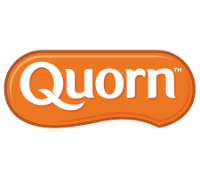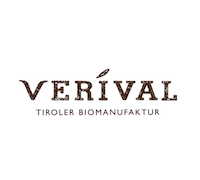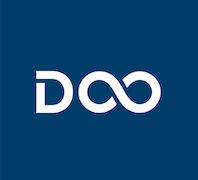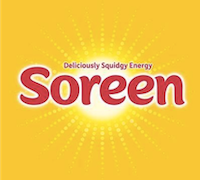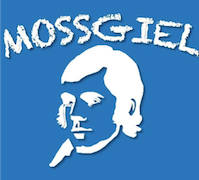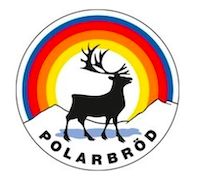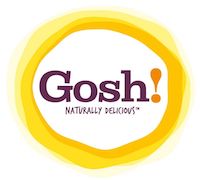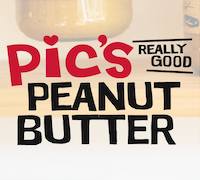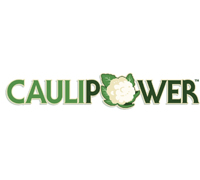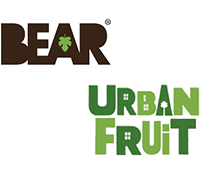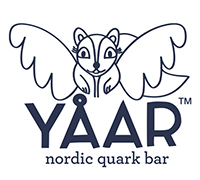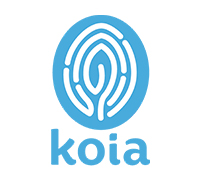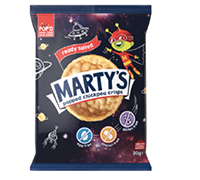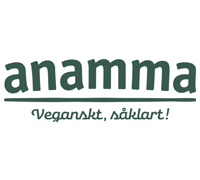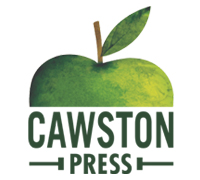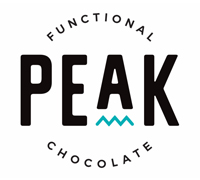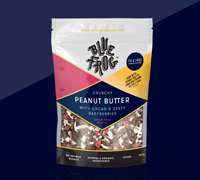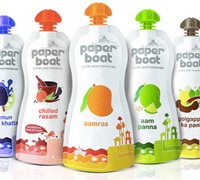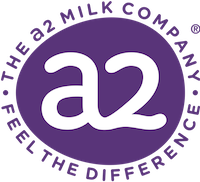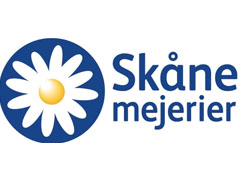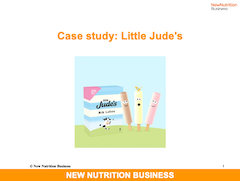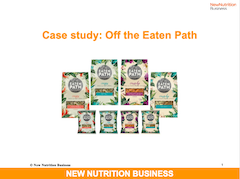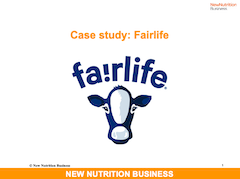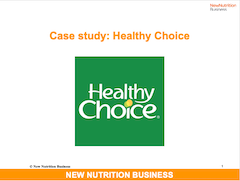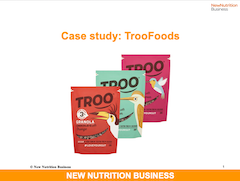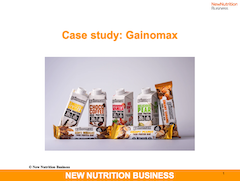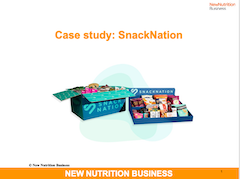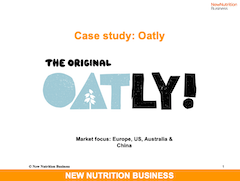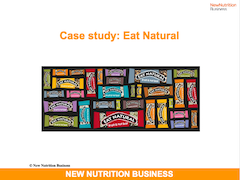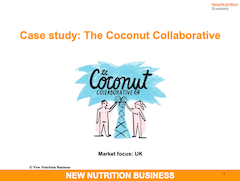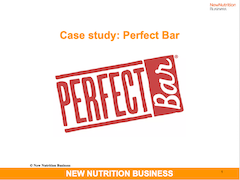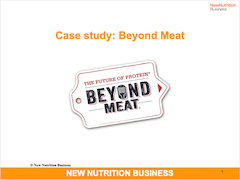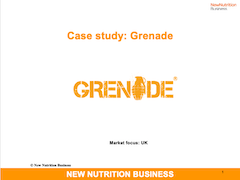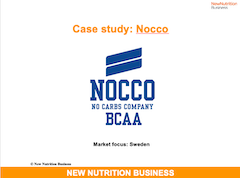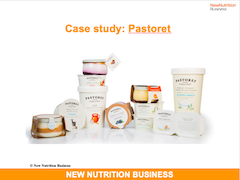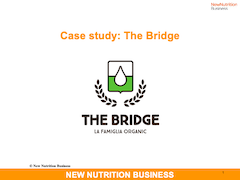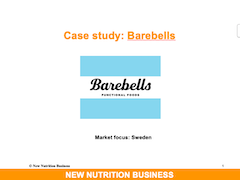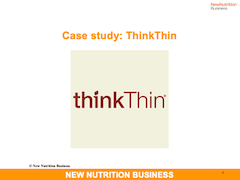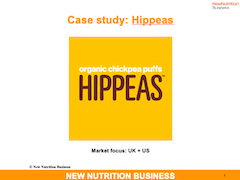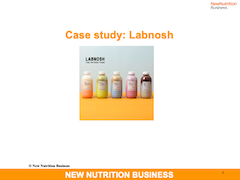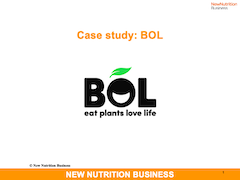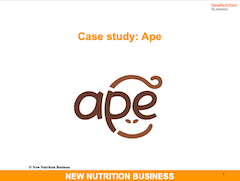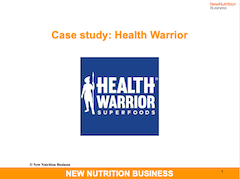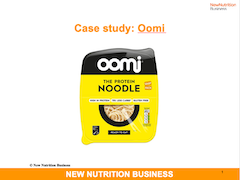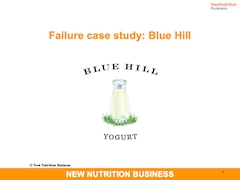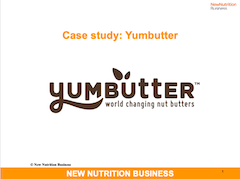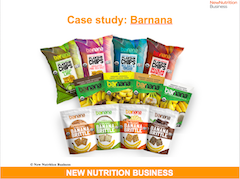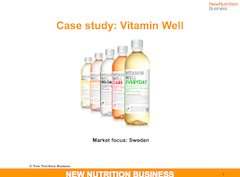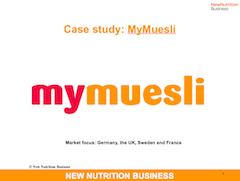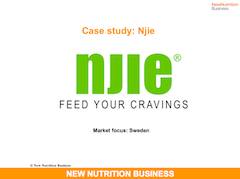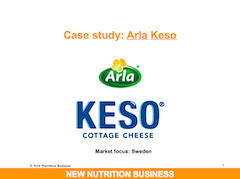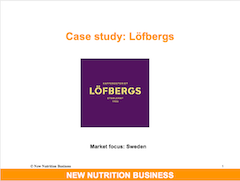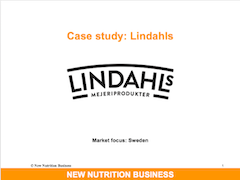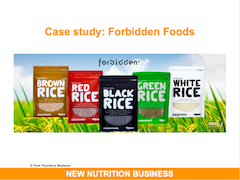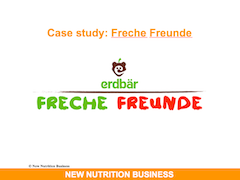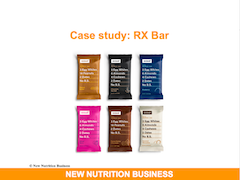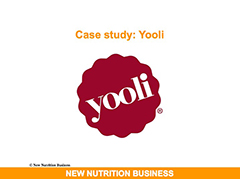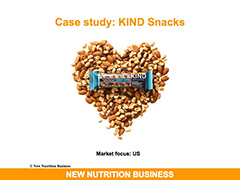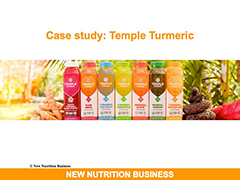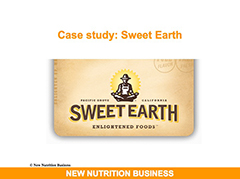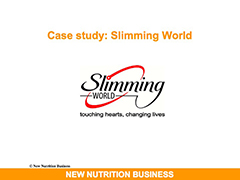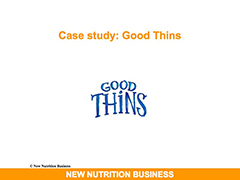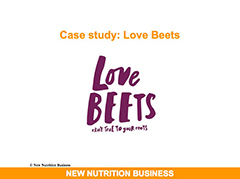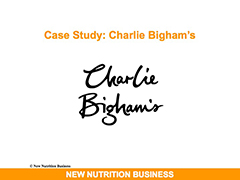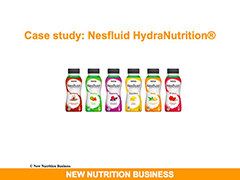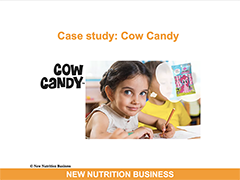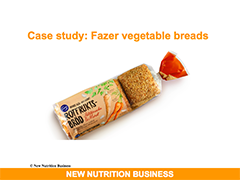Our case studies focus on brands and products that provide lessons from real challenges and opportunities which you can use to inform business strategy. They are packed with detail including brand portfolio, pricing, and communications and marketing strategy, merchandising and distribution, and come with a check list of key lessons learned.
Published: March 2024
Case study: Oatly (2024 update)
In this 2024 update we look at Oatly's financial performance in 2023, with rare improvements seen in some regions.
Download powerpointPublished: February 2024
Case study: Goodles
Despite what the media might be telling you, companies in carbohydrate categories have bright prospects - and Goodles illustrates this. Their nutrient-dense, better-for-you mac and cheese give consumers ‘permission to indulge’ in a classic comfort food while helping them tune out ‘carb-negative’ messages from social and mainstream media.
Download powerpointPublished: February 2024
Case study: Good Measure
Good Measure is perhaps one of the most successful brands to come out of General Mills’ internal venture studio G-works. Wanting to “mainstream a blood-sugar-friendly lifestyle”, the brand targets the small but growing number of health-forward consumers who are trying to reduce blood glucose spikes by the food choices they make.
Download powerpointPublished: February 2024
Case study: Biotiful (2024 update)
The British kefir brand continues to grow and entered a new product category at the start of 2024. After a slow-down in sales growth in 2022, the brand saw an impressive 23% increase in revenue in 2023.
Download powerpointPublished: January 2024
Case study: Olipop
Through clever marketing and flavour innovation, better-for-you prebiotic soda brand Olipop has built a strong reputation among young consumers. With sales exceeding $200m in 2023, it seems that beverages is one category where prebiotics may actually work.
Download powerpointPublished: January 2024
Case study: Bol
Bol connects to one of the most important growth trends today: Plants Made Convenient. The brand is the result of Coca Cola-owned Innocent abandoning its veg pots idea and an employee taking it on to start his own company instead.
Download powerpointPublished: January 2024
Case study: Charlie Bigham's (2024 update)
Charlie Bigham’s has redefined the UK’s ready meal category. It is proof that it is possible to succeed despite selling your products at a 100%+ price premium, and despite being told by supermarket executives that your strategy needs to change.
Download powerpointPublished: December 2023
Case study: Slate
Slate was launched with the aim to boost milk consumption in the US and bring innovation to the chocolate milk category with a better-for-you chocolate milk targeted at adults. The brand has raised $25m in investment so far and grew its retailer presence from 300 in 2020 to 12,000 in 2023.
Download powerpointPublished: December 2023
Case study: PopCorners
With a revenue of $311 million, PopCorners is the third biggest corn snack brand in the US and has succeeded mostly thanks to a focus on the ever-important taste and texture.
Download powerpointPublished: December 2023
Case study: Yakult (2023 update)
Yakult is one of the world’s oldest and most successful health brands. It has demonstrated the benefits of a highly-focused strategy and there are 4 important lessons from this extraordinary success story.
Download powerpointPublished: November 2023
Case study: Wipala
This Ecuadorian brand started as a university project and has evolved into a growing snacking business that connects to many of the most important market trends and proves the value of transparency.
Download powerpointPublished: November 2023
Case study: Zrou
This Chinese maker of plant-based meat alternatives has created success by connecting the product to professional chefs and by constantly bringing out new products, thereby appealing to the Chinese consumer's ever-changing tastes and interests.
Download powerpointPublished: November 2023
Case study: Graze (2023 update)
The Unilever-owned snacking company continues to struggle to get its sales back to pre-Covid and pre-acquisition levels. The brand started to lose money in 2019 and has not made a profit since. It’s a reminder that the snacking category has seen so many new brands and products over the last 15 years that it is now over-crowded and fiercely competitive.
Download powerpointPublished: October 2023
Case study: Laird Superfood (2023 update)
This maker of functional plant-based creamers and coffee saw impressive growth in its first seven years on the market, but has now stalled. Laird Superfood illustrates the value of a personal brand, and the vulnerability of basing your value proposition on ingredients.
Download powerpointPublished: October 2023
Case study: Morinaga Lactoferrin yoghurt
Morinaga’s lactoferrin yoghurt is one of the few functional yoghurts to succeed in Japan without FFC (Foods with Function Claims). Driven by research and consumer education the product has managed to establish itself in the market, but will need to increase its differentiation to survive in the coming years.
Download powerpointPublished: October 2023
Case study: Rest by Hy
Rest is a result of Yakult's Korean subsidiary Hy diversifying its portfolio to include a broader range functional dairy products. Launched in 2023, the Rest range offers a sleep care and a stress management product - both of which have been successful from the start.
Download powerpointPublished: September 2023
Case study: Celsius
Thanks to its positioning as something sporty and ‘cool’, Celsius has been a major fuel for the energy drinks market in many regions. The brand recently hit the $1bn revenue mark and saw a sales increase of 108% between 2021 and 2022.
Download powerpointPublished: September 2023
Case study: John West
The market leader in the British tinned fish market has shown many signs of clever innovation in its attempts to reinvent an uneventful staple category as a modern health food.
Download powerpointPublished: September 2023
Case study: Wilde
The US maker of protein chips made from chicken breast connects to an impressive seven key trends and provides lessons in product development, flavour strategy and choosing the right name.
Download powerpointPublished: August 2023
Case study: Dobra Kaloria
This Polish family company has recently invested heavily in meat substitutes, after a failure in that space 25 years ago. With its new approach it illustrates the value of plant-based substitutes that are made from actual vegetables that the consumer can see and understand.
Download powerpointPublished: August 2023
Case study: Dos Pinos
The leading dairy producer in Central America has a number of innovative products in its portfolio and is a reminder of the value of being innovative and agile in responding to consumer demands - even as a major corporation.
Download powerpointPublished: August 2023
Case study: Deliciously Ella
Deliciously Ella has evolved from a popular blog 10 years ago to a successful food brand with over 50 SKUs in its portfolio and £25m ($31.7m/€28.9m) in sales.
Download powerpointPublished: July 2023
Case study: Galychyna
This Ukrainian dairy brand sets itself apart from competition by using fresh milk, provenance marketing and a simplistic yet colourful packaging design.
Download powerpointPublished: July 2023
Case study: Únicla
Developed as a value-add brand by parent company Feiraco, this Galician dairy company became the first player in Spain to launch a certified zero carbon emissions milk in 2021.
Download powerpointPublished: July 2023
Case study: Tim's Dairy
This small but profitable Greek-British yoghurt brand is a good reminder to companies that making a profit is as important as achieving constant growth.
Download powerpointPublished: July 2023
Case study: Ehrmann
A well-established dairy player, Ehrmann has managed to achieve revenues over €750m and a presence in more than 70 countries through clever product innovation and a focus on being family-run.
Download powerpointPublished: June 2023
Case study: Fage (2023 update)
Family-run Fage, who pioneered Greek-style yoghurt in the US and many other markets more than 30 years ago, has come a long way from its humble beginnings in 1926. Today it has a 15% share of the US Greek yoghurt market and revenues of over $550m.
Download powerpointPublished: June 2023
Case study: Megumi
The Megumi brand is one of few brands to succeed under Japan’s Foods with Functional Claims (FFC) regulations. Its success can be attributed to the fact that it was the first functional yoghurt product with a 'visceral fat reduction' claim, which caught the attention of consumers.
Download powerpointPublished: June 2023
Case study: Oatly (2023 update)
In this 2023 update we look at Oatly's financial performance which has seen some rare improvements lately, possibly thanks to the positive influences of its newly appointed CEO.
Download powerpointPublished: May 2023
Case study: HealthyCo
HealthyCo is one of many brands that show that the high-protein trend is here to stay. The brand broke through with its Proteinella product, a high-protein sweet spread intended as a healthier alternative to Nutella, in 2016 and had a CAGR of 21% between 2016-2021.
Download powerpointPublished: May 2023
Case study: Clif
Clif illustrates the value of promoting your product on an energy platform - especially if your target market is active, adventurous consumers like in the case of Clif. The brand has maintained a consistent energy focus since its inception 25+ years ago and has been rewarded for this by consumers.
Download powerpointPublished: May 2023
Case study: Soreen (2023 update)
The Soreen brand reinvented itself ten years ago and is today an innovative actor that is disrupting the UK cake category with better-for-you options sold in snackable formats. It was one of few brands in the UK cakes & biscuits category to see volume growth in 2022, with value sales up 12%.
Download powerpointPublished: April 2023
Case study: Kevin's Natural Foods
This ready meal brand connects to a number of important growth trends and addresses a wide range of personalised food preferences – paleo, keto, free-from dairy, gluten, soy and refined sugars. It recorded sales of $140m in 2022, up 40% from 2021.
Download powerpointPublished: April 2023
Case study: Nick's
Nick’s is a rare example of a small international brand that has managed to conquer the US market. The Swedish maker of low-sugar ice cream and sweets had 2021 sales of SEK 246m, with around 50% coming from the US market.
Download powerpointPublished: April 2023
Case study: Yakult 1000
Playing a key role in the Japanese yoghurt market since the 1930s, Yakult further established itself in the market with the launch of Yakult 1000. This product is available for home delivery only and saw sales of 100+ million bottles in the first quarter.
Download powerpointPublished: March 2023
Case study: Philadelphia
Philadelphia dominates the cream cheese category thanks to its long-established brand equity, a continuous marketing investment and a stream of often highly creative new products to refresh consumer interest. And if anyone can make plant-based cheese work, it is the Philadelphia brand.
Download powerpointPublished: March 2023
Case study: Meiji LG21
LG21 became a revolutionary pioneer of yoghurt with functional claims when it launched in 2000. Today it is the market leader in the Japanese yoghurt market, much thanks to its proven effect on digestive health.
Download powerpointPublished: March 2023
Case study: Beyond Meat (2023 update)
Beyond Meat perfectly illustrates the challenges of the meat substitute category. The company’s operating loss for 2022 was up by 95%, while revenue was down 9.9%.
Download powerpointPublished: February 2023
Case study: HeyTea
This photogenic chain of cheese tea stores pioneered the digitalisation of Chinese beverage chains and shows that Chinese consumers are no longer just chasing western brands.
Download powerpointPublished: February 2023
Case study: Kourellas
Kourellas encourages its customers to “eat like a Greek” with its wide range of full-fat dairy products made from sheep, goat or cow’s milk. The small family brand was recently acquired by DELTA, a leader in the Greek dairy sector.
Download powerpointPublished: February 2023
Case study: The Milkman
This Egyptian premium dairy brand connects to many interesting key market trends and illustrates the power of being truly "Instagrammable".
Download powerpointPublished: February 2023
Case study: Biotiful (2023 update)
The British kefir brand continues to grow and is an excellent example of a brand that has thrived thanks to being small, independent and able to quickly pivot as demand and trends change. And while sales growth has started to slow down, the brand still saw a 7.5% sales increase in 2022.
Download powerpointPublished: January 2023
Case study: Ginsters
Ginsters is the Cornwall-based maker of savoury pastries that has seen great success thanks to significant investment in NPD, thereby ensuring it remains interesting and relevant in the minds of the consumers.
Download powerpointPublished: January 2023
Case study: Terra Nostra
This Azores-based dairy company has used storytelling and key trends like provenance and sustainability to build its brand of grass-fed dairy.
Download powerpointPublished: January 2023
Case study: Pastoret (2023 update)
The Spanish maker of gourmet yoghurt has continued to grow since we last wrote about them. It has stayed true to its roots, maintaining its position as a premium dairy brand while never ceasing to innovate.
Download powerpointPublished: December 2022
Case study: WhatIF
With plant milks and noodles made from Bambara groundnut, WhatIF positions itself as a radical and revolutionary company that works for sustainability in unique ways that truly make an impact. It launched in Singapore in 2020 and has recently expanded to the US, Australia, New Zealand and Malaysia.
Download powerpointPublished: December 2022
Case study: Olly's
What started as a brand of snacking olives has expanded into the pretzel category - thereby making itself more versatile and appealing. Olly’s is a good example of a brand that has shown an ability to quickly pivot on strategy - and it's been rewarded for it.
Download powerpointPublished: December 2022
Case study: Power Up
Morris Elbaz was searching for something quick and natural to fuel his runs and was disappointed to find that all the trail mixes were loaded with salt or sugar. Power Up was launched to fill this gap and was one of the top 10 fastest growing snack mix brands in the US in 2020.
Download powerpointPublished: November 2022
Case study: Veggies Made Great
Veggies Made Great encourages consumers to eat more vegetables, and make this easy by offering mainstream vegetable-forward products in convenient and delicious formats. It is an excellent example of 'plants made convenient' and proves the validity of the idea of bakery products that deliver a dose of vegetables.
Download powerpointPublished: November 2022
Case study: Dole Boosted Blends
Dole's Boosted Blends line of frozen smoothie mixes launched in 2020 and became an instant hit. The range saw sales of $15.2 million in 2021, making it one of the most successful new products that year. The range connects to many key trends, including Mood & Mind, Digestive Wellness and Plants Made Convenient.
Download powerpointPublished: November 2022
Case study: Veganz
What started as a chain of vegan supermarkets has evolved into a major player in the European market for plant-based foods. With a range of 400+ vegan products in 28 countries, Veganz grew their sales by 14% in 2021 to reach €30.4m.
Download powerpointPublished: November 2022
Case study: Minute Maid Zero Sugar
This Coca-Cola owned brand has come a long way since its foundation in 1945. The Minute Maid Zero Sugar line became one of the most popular new launches in 2021, with sales exceeding $70m.
Download powerpointPublished: October 2022
Case study: Chobani Oat
Chobani Oat is proof that if your customers are loyal enough, and your strategy is good enough, they will follow you into a brand new category. The launch of Chobani Oat in 2019 marked the company's first foray outside of the yoghurt aisle and it has served them well.
Download powerpointPublished: October 2022
Case study: Nomadic Dairy
Nomadic Dairy has managed to become category leader in the UK Convenience & Impulse channel, despite being small and premium priced. This is much thanks to the brand’s position as a small, independent brand with roots in the “lush, green pastures of County Donegal”.
Download powerpointPublished: October 2022
Case study: Fairlife (2022 update)
With sales exceeding $1bn, Fairlife is one of Coca-Cola’s top performing brands and provides good lessons in how the dairy industry can respond to the rise of plant milks.
Download powerpointPublished: October 2022
Case study: Simply Almond & Oat
Simply capitalises on the notion that "plant-based milks are full of additives" by offering 'clean' products made from almond or oat. Sales of Simply Almond reached $24.3m (€25.2m) in 2021, making it one of the most successful products that year.
Download powerpointPublished: September 2022
Case study: Dave's Killer Bread
Bread may seem like a difficult category to succeed in. Dave's Killer Bread succeeded with an interesting story, striking packaging, interesting recipes and good taste. It is the best-selling organic sliced bread in the US and saw sales growth of 15% in the first quarter of 2022.
Download powerpointPublished: September 2022
Case study: Crystal Farms Cheese Wraps
Cheese is being reinvented as something indulgent-yet-healthy in consumers’ mind, and Crystal Farms is one of many brands that is benefiting from this. The brand launched its most innovative product to date in 2020, which made sales of $16.6m in its first full year on the market.
Download powerpointPublished: September 2022
Case study: Sara Lee
Grupo Bimbo-owned Sara Lee gives consumers permission to indulge in bread and is proof that even Big Food can use the big trends to successfully innovate in a traditional category.
Download powerpointPublished: August 2022
Case study: Chobani Complete
Communicating about quality protein is an untapped opportunity, and one that Chobani realises the value of. With its Complete range, the brand creates a point of differentiation compared to other dairy protein products – and a competitive advantage compared to plant-based products. This is a key reason why sales of Chobani Complete reached $34.1m in its first full year on the market.
Download powerpointPublished: August 2022
Case study: SlimFast Keto
Launching keto products under a brand best known for its low-calorie and low-carb proposition is bold but for Glanbia-owned SlimFast, it has paid off. The brand's keto range quickly took off and accounts for around 40% of the brand’s overall business today.
Download powerpointPublished: August 2022
Case study: Birds Eye Bakes
Conagra has invested heavily in re-inventing its Birds Eye brand, with a focus on driving sales from new products. Its vegetable bakes proved to be particularly successful and generated sales of $33.4m (€32.5m) in 2021. It is a great example of a ‘plants made convenient’ strategy done well.
Download powerpointPublished: August 2022
Case study: Ratio
Ratio was launched by General Mills in 2020, marking the company’s first foray into the keto world. The brand became an instant success and saw US sales of $34.4m (€33.85m) in 2021, making it one of the most successful new products in 2021.
Download powerpointPublished: July 2022
Case study: Charlie Bigham's (2022 update)
A privately-owned company has redefined the UK’s ready meal category. Charlie Bigham’s is proof that it is possible to succeed despite selling your products at a 100%+ price premium, and despite being told by supermarket executives that your strategy needs to change.
Download powerpointPublished: July 2022
Case study: Life Cuisine
Personalisation is an infamously tricky space to succeed in. Nestlé-owned Life Cuisine took a new approach to this challenge by acknowledging that consumer behaviours and preferences are becoming fragmented, and it's helped them achieve sales of over $70m.
Download powerpointPublished: June 2022
Case study: Quest Nutrition
This protein bar maker has recently entered the bakery space, providing consumers with high-protein and keto-friendly pizzas. The brand has seen impressive growth since it started in 2010 and achieved revenues of $350m+ in 2021.
Download powerpointPublished: June 2022
Case study: Halo Top (2022 update)
Halo Top is proof that even flashy challenger brands have a limit. Once a star performer with $342 million in revenue, the better-for-you ice cream brand's sales have started to tumble and fell by 43% between 2017-2021. It is now trying to revive its fortunes by switching to ultra-filtered milk to deliver a creamier product.
Download powerpointPublished: May 2022
Case study: Peperami
Dating back to 1979, Peperami is an excellent example of the success that can be reaped from the meat snacking trend. The brand saw a 20% growth last year and this is mainly thanks to its commitment to creative, stand-out marketing and a stream of innovative new products.
Download powerpointPublished: May 2022
Case study: Confetti
This Singapore-based brand upcycles 'ugly' vegetables and turns them into nutrient-dense snacks. The brand combines six of the most powerful market trends and is a good lesson in branding and CSR done well.
Download powerpointPublished: April 2022
Case study: Seedlip
Seedlip was dubbed "a game-changing brand" when it launched in 2015. However, after 7 complete years in business the company is yet to make a profit. A combination of ill-founded premium pricing and taste challenges has caused Seedlip to evolve into a brand that is under-performing in a high-growth category.
Download powerpointPublished: April 2022
Case study: Undercover
Undercover offers chocolate-covered quinoa treats and provides a lesson in why naturally functional ingredients paired with permission to indulge can be a very powerful combination. It is an excellent example of a brand that lets the ingredients speak for the value of the product.
Download powerpointPublished: March 2022
Case study: Beyond Meat (2022 update)
Beyond Meat perfectly illustrates the challenges of the meat substitute category, and in this updated case study we explain why.
Download powerpointPublished: March 2022
Case study: Oatly (2022 update)
In this 2022 update we look at Oatly's financial performance in various regions, its ever so edgy marketing and its Amazon-style business strategy.
Download powerpointPublished: February 2022
Case study: Fage
The pioneer of Greek-style yoghurt in the US and many other markets, Greek family business Fage has come a long way from its humble beginnings in 1926. Today it has a 15% share of the US Greek yoghurt market and revenues of over $500m.
Download powerpointPublished: February 2022
Case study: Lifeway
Lifeway created the kefir category in US in the late 1980s. The brand struggled as the kefir market reached its natural ceiling in the late 2010s but a pivot in messaging strategy has turned the company around, resulting in 15% growth in 2021.
Download powerpointPublished: January 2022
Case study: Poppi
This American brand has managed to make a dent in the intensely competitive soda market with its range of prebiotic, apple cider vinegar-infused sodas.
Download powerpointPublished: January 2022
Case study: Biotiful (2022 update)
The British kefir brand continues to see strong growth and is an excellent example of a brand that has thrived thanks to its ability to keep its finger on the market’s pulse and stay nimble. Revenue reached £27m in 2021, up 40% from 2020.
Download powerpointPublished: December 2021
Case study: GT Living Foods
GT Living Foods is the 25 year old company that essentially created the $1.3bn kombucha category in the US. It remains the market leader today and had sales of around $300m in 2020.
Download powerpointPublished: December 2021
Case study: Mud Wtr
Shane Heath got tired of the Silicon Valley culture and decided to leave the tech start-up industry to create Mud Wtr - an adaptogen-enriched powdered coffee alternative sold DTC. The brand has seen great success over the past year and is proof that it is possible to build a flourishing F&B business entirely without the help of traditional retailers.
Download powerpointPublished: November 2021
Case study: Yakult
Yakult Honsha, the Japanese-headquartered maker of probiotic dairy drinks, has demonstrated the benefits of a highly-focused strategy and is one of the world's oldest and most successful health brands. There's no company that can afford to ignore the lessons from this extraordinary success story, which you will learn about in this extensive case study.
Download powerpointPublished: November 2021
Case study: Cheribundi
Cheribundi's tart cherry juice for athletic recovery is available in 50,000 retailers across the US and the brand is proof that good science is nothing, if your product doesn’t simultaneously connect to key market trends and fashionable belief.
Download powerpointPublished: October 2021
Case study: Brazi Bites
Brazi Bites overcame the difficult challenge of creating a new category when launching Brazilian cheese breads in 2010. Ten years on, the brand hit $25m in revenues and can be found in over 15,000 retailers across North America.
Download powerpointPublished: October 2021
Case study: Desincha
This tea brand successfully popularised tea drinking in Brazil when launching digestive wellness teas and powders in 2017. It offers a valuable lesson in the power of influencer marketing.
Download powerpointPublished: September 2021
Case study: Banza
Wanting to make nutritious food more accessible by reinventing traditional comfort foods, Banza launched its chickpea pasta range in 2014. Today it is the fastest-growing pasta brand in the US with products available in over 17,000 stores, up from 800 in 2015.
Download powerpointPublished: September 2021
Case study: Yummy Bros
This Singapore-based meal prep brand reinvents authentic Asian cuisine and offers them in healthier, customisable versions. It is a good example of a brand that has succeded in the immensely fragmented world of fitness and weight management.
Download powerpointPublished: August 2021
Case study: Smart Sweets
Canadian Smart Sweets, founded by a 21-year-old in 2015, has sky rocketed to become the market leader in the low-sugar sweet section in both the US and Canada. It is proof that with good marketing and a convincing enough concept, you can sell your product at a 1000% price premium and still be a flourishing business.
Download powerpointPublished: August 2021
Case study: Nick's
Nick’s is a rare example of a small international brand that has managed to conquer the US market. The Swedish maker of low-sugar ice cream and sweets achieved sales of over $20m in 2020 and provides an interesting lesson in focusing on taste vs. health, and what this can do to your brand.
Download powerpointPublished: August 2021
Case study: Iswari
This Portuguese powder brand is an example of how growth and expansion is possible without going into mass retailers. It is also a good example of a social media marketing strategy done well.
Download powerpointPublished: July 2021
Case study: Kodiak Cakes
Family-run Kodiak Cakes gives US consumers permission to indulge with its range of high-protein wholegrain pancakes, waffles and cakes. The brand saw sales grow by 25% in 2019-2020, with revenue reaching $200m, and is a good example of why you should never underestimate the power of market trends.
Download powerpointPublished: July 2021
Case study: Zevia
Zevia became the US’ first zero calorie soda sweetened with stevia when it launched in 2007. Since then the brand has developed into a $110m brand that filed for an IPO in spring 2021.
Download powerpointPublished: July 2021
Case study: Siete
Realising that that no one was selling Mexican American products in the health-food category, the Garza family decided to change this and launched Siete. The brand's range of grain-free tortillas and tortilla chips became an instant success and Siete achieved $40m in sales in 2020.
Download powerpointPublished: June 2021
Case study: Creative Snacks
Mars-owned Creative Snacks is a leading brand of coconut snacks and almond clusters and shares many similarities with sister company KIND. The brand connects to 7 key trends and offers trail mixes and cluster-style snacks with a clear better-for-you proposition.
Download powerpointPublished: June 2021
Case study: Graze (2021 update)
Graze is one of many companies that saw success during 2020 thanks to a strong DTC strategy. Since its acquisition by Unilever in 2019 the company has exited the US market, instead focusing its efforts on Europe.
Download powerpointPublished: May 2021
Case study: Two Good
Danone's Two Good is a rare example of a brand that has succeeded in reinventing the already very mature category that is yoghurt. By appealing to consumers’ demand for less sugar and for brands that are both socially and environmental sustainable, it achieved sales of $111m in its first 16 months on the market.
Download powerpointPublished: April 2021
Case study: YoPro
Danone's high-protein yoghurt brand has seen great success since its launch and achieved global sales of over $150m after only three years on the market.
Download powerpointPublished: April 2021
Case study: Happy Monkey
Happy Monkey is a rare example of a company that has managed to survive in the intensely competitive and difficult market segment that is kids nutrition. The company was one of the fastest growing smoothie brands in the UK during 2020 with retail sales growing by more than 50%.
Download powerpointPublished: April 2021
Case study: Pip & Nut (2021 update)
The UK's fastest growing nut butter brand grew strongly during the Covid-19 pandemic and saw revenue increase by 57.4%. But Pip & Nut is also an example of how hard it can be to grow beyond a niche in a crowded, intensively competitive and creative market like nut butters.
Download powerpointPublished: March 2021
Case study: Linas Matkasse
This meal kit pioneer launched in 2008 and acted as a role model for industry giants such as Hello Fresh and Blue Apron. The Swedish company says its customer base tripled during the pandemic and its 2020 revenue exceeded $140m.
Download powerpointPublished: March 2021
Case study: Essentia
Essentia became the pioneer in alkaline water when it launched in 1998. 23 years later it remains the market leader and the business was sold to Nestlé earlier this month.
Download powerpointPublished: March 2021
Case study: Moma (2021 update)
Since we last wrote about this British breakfast brand its sales have grown by 22% and it has forayed beyond breakfast products to enter the oat milk space.
Download powerpointPublished: February 2021
Case study: Letti A2
Brazil's first A2 dairy brand launched in 2018 and has come far thanks to a marketing strategy that focuses on provenance, freshness and digestive wellness.
Download powerpointPublished: February 2021
Case study: DoBem
This Ambev-owned Brazilian beverage brand has adopted a DTC approach in the face of Covid-19 and is popular with kids and young adults alike. But the DoBem story also shows that even for a popular and established brand, brand extension can be difficult to get right.
Download powerpointPublished: February 2021
Case study: Lily's Sweets
Lily's Sweets is the fastest growing brand in the sugar-free chocolate category in the US and is a great example of how far striking packaging can get you.
Download powerpointPublished: January 2021
Case study: Biotiful (2021 update)
This British kefir brand is an example of a brand that, thanks to being in tune with the market, was able to quickly pivot on strategy to meet consumer demand during Covid-19. It shifted its focus from digestive wellness to immunity and as a result, it grew its sales by nearly 50% during 2020.
Download powerpointPublished: January 2021
Case study: LivUp
This Brazilian ready meal brand relies on direct-to-consumer as its main channel and targets busy professionals with its ultra-frozen meals made from ingredients sourced from small local suppliers. After only four years on the market, the brand already has annual revenue of $10m+.
Download powerpointPublished: November 2020
Case study: Spindrift
Claiming to be America's first and only sparkling water made with real squeezed fruit, Spindrift was founded 10 years ago and has exceeded $100m in revenue. It grew by 160% over the past year and the brand provides a good lesson in the importance of packaging.
Download powerpointPublished: November 2020
Case study: Oatly (2020 update)
With the latest financial data and information about the much talked about Blackstone deal, this updated case study will give you a good idea of how Oatly is doing and what the future may hold for the plant-based challenger brand.
Download powerpointPublished: November 2020
Case study: Fresheasy
South Korea's number one meal kit delivery service wants to “free the world of cooking” and shows how Covid-19 has forced a pivot in strategy.
Download powerpointPublished: October 2020
Case study: Vital Proteins
This collagen brand’s success is proof that people are open to animal-based innovation as much as plant-based. It is a $200m+ brand after only 7 years on the market and recently sold a majority stake to Nestlé Health Science.
Download powerpointPublished: October 2020
Case study: Laird Superfood
This direct-to-consumer brand offers anything from plant-based creamers to functional mushroom powders and have had a CAGR of 185% since 2017. The company recently received a $10-million investment from Danone Group.
Download powerpointPublished: October 2020
Case study: The a2 Milk Company (2020 update)
With the most recent financial data and profiles of other A2 dairy brands around the world, this updated case study will give you an up-to-date picture of the market for A2 milk and the most recent figures that illustrate the market leader's success.
Download powerpointPublished: September 2020
Case study: Rude Health
Rude Health was founded with £4,000 worth of personal savings in 2005 and is today a £19 million brand. The brand's success has been fuelled mainly by its plant-based milk range launched in 2013 and June 2020 saw PepsiCo acquiring a 10% stake in the company.
Download powerpointPublished: September 2020
Case study: The Collective
This New Zealand brand was founded with the aim to “create an extraordinary yoghurt with an unbeatable taste”. It quickly grew to become New Zealand's best-selling gourmet yoghurt and today the UK is The Collective's biggest market, fuelled by the company's kefir range.
Download powerpointPublished: September 2020
Case study: Oumph
This plant-based meat alternative brand was launched by Swedish company Food for Progress in 2015 and was acquired by The LIVEKINDLY Co in June 2020. The company is active on eight European markets and grew its UK sales by 400% during 2019.
Download powerpointPublished: August 2020
Case study: Yeo Valley
Transparency sells, and coupled with sustainability, it can make a product appealing even to those consumers who otherwise think twice before buying dairy. This is the cornerstone of the success of Yeo Valley, the UK organic dairy brand that grew from a family business in the 1990s into a mainstream supermarket presence and £149.3 million sales in 2019.
Download powerpointPublished: August 2020
Case study: Renjer
With jerky made from reindeer, elk or red deer meat, this Swedish company aims “to provide quality-aware consumers with a wide selection of snacks that are related to the Nordics”, putting Provenance at the heart of its strategy.
Download powerpointPublished: August 2020
Case study: Smashmallow
This gourmet marshmallow brand is a prime example of a traditional food that has been reinvented. The brand has taken a familiar product and made consumers think about it differently through branding, positioning, packaging and culinary tweaks – and this is what most of the success stories are about.
Download powerpointPublished: July 2020
Case study: Lohilo
With marketing that includes unicorns and rainbows, Sweden's first protein ice cream brand Lohilo clearly targets young, active and adventurous consumers. The brand focuses solely on social media and word-of-mouth marketing and sales grew by 87% in Q1 2020.
Download powerpointPublished: July 2020
Case study: Bang
Bang Energy is the challenger brand that has managed to break in to the highly saturated and 'big food'-dominated category that is energy drinks. The brand's success and $1bn+ revenue reminds us that marketing can be a bigger source of disruption than innovative products or new science.
Download powerpointPublished: July 2020
Case study: Enfamil
A product from a 60-year-old brand turned out to be the second most successful launch in the US in 2019, earning an impressive $230 million (€205 million) in retail sales. Read more about Enfamil, the brand behind the hugely successful NeuroPro range, in this case study.
Download powerpointPublished: June 2020
Case study: Tweek
Åsa Rosén wanted to connect the dots between the world of health and the wonderful world of scrumptious sweets. The result is Tweek - a Swedish company that offers "sweets with benefits" and that grew its sales by over 2000% in 2018.
Download powerpointPublished: June 2020
Case study: P3 (2020 update)
This Kraft Heinz brand remains a popular snack option for Americans looking for "a more interesting way to get your protein". The brand is an excellent example of an umbrella brand done well and it has seen a 215% sales growth since its launch five years ago.
Download powerpointPublished: June 2020
Case study: Halo Top (2020 update)
Halo Top is proof that even flashy challenger brands have a limit. Once a star performer with $342 million in revenue, the better-for-you ice cream brand's sales have started to tumble and fell by 41% between 2017-2019.
Download powerpointPublished: May 2020
Case study: Bulletproof
Based on the concept of biohacking, disruptor brand Bulletproof offers a range of MCT-infused products promoted for mental and physical performance. The company has an annual revenue of over $100 million and is said to be exploring a sale.
Download powerpointPublished: May 2020
Case study: Gousto
Gousto is one of the main meal delivery service brands on the UK market and has raised over £130m ($162m/€149m) in external investment. The company achieved profitability for the first time in Q4 of 2019, having doubled its revenue in the same year.
Download powerpointPublished: May 2020
Case study: Straus Family Creamery
This family-owned dairy company claims to be the first 100% certified organic creamery in the United States. The company is highly mission-driven and promotes itself on platforms of provenance and environmental sustainability.
Download powerpointPublished: May 2020
Case study: De Vegetarische Slager
With the aim to entice meat eaters to eat more plant-based, De Vegetarische Slager clearly targets flexitarians with its meat-like soy-based meat alternatives. The company was acquired by Unilever in 2018 and the founder aims to become bigger than the biggest meat company in the world.
Download powerpointPublished: April 2020
Case study: Quorn
The 35 year old mycoprotein brand connects to five key trends and recently repositioned itself as an environmentally sustainable option. It invested heavily in NPD in 2019, entering several new categories.
Download powerpointPublished: April 2020
Case study: Verival
A pioneer of organic cereal in Austria in the 1980s has evolved into an innovative cereal brand that offers on-trend products such as grain-free sport muesli and broccoli porridge.
Download powerpointPublished: April 2020
Case study: Drinkfinity (2020 update)
This PepsiCo e-commerce brand of customised better-for-you beverages appears to have vanished into thin air, leaving confused and angry consumers behind.
Download powerpointPublished: March 2020
Case study: Soreen
Sports positioning and permission to indulge are two of the most powerful strategies a food brand can adopt in today’s market - and Soreen has reinvented itself as a thriving brand by adopting both. It had sales growth of 5.4% in 2019 – in a category that grew by only 2% in the same year.
Download powerpointPublished: March 2020
Case study: Vivera
Plant-based meat alternative company Vivera recently went through a major rebranding - even though the brand was already thriving. The new Vivera connects to the Sustainability trend more strongly than ever before, and aims to inspire flexitarians to join "The Goodness Revolution".
Download powerpointPublished: March 2020
Case study: Mossgiel Farm
Can a business be based on sustainability? Scottish dairy company Mossgiel Farm suggests that the answer to that question is ‘yes’. Bryce Cunningham has built Mossgiel Farm’s brand identity on sustainability and provenance and saw sales grow by over 100% in 2019.
Download powerpointPublished: February 2020
Case study: Polarbröd
A family company from a tiny town in the north of Sweden has grown into the third biggest bread company on the Swedish market. With a strong focus on provenance and sustainability, Polarbröd sold nearly $100m worth of bread last year - including ready-to-eat sandwiches with reindeer meat.
Download powerpointPublished: February 2020
Case study: Gosh
What started as a humble deli in London has grown to become the UK's 8th biggest meat-free brand. Gosh's revenue is approaching $20m and many signs indicate that the independent brand might be preparing for a sale.
Download powerpointPublished: February 2020
Case study: Pic's Peanut Butter
Bruce 'Pic' Picot set up Pic's Peanut Butter at the age of 55, after being diagnosed with a disease that put an end to his career as a sailing instructor. The company is today the best selling peanut butter brand in New Zealand, with revenue growth of 209% in the past three years.
Download powerpointPublished: January 2020
Case study: Nairn's
Founded in 1896, Nairn’s has grown to become one of the UK’s biggest free-from brands. The Scottish oatcake company specialises in gluten-free and connects to an impressive nine of our identified key trends and mega trends for 2020.
Download powerpointPublished: January 2020
Case study: Caulipower
Despite only having been around for three years, Caulipower is already a $100 million brand. The company has been helped by trends like low-carb and plant-based and targets flexitarians with its better-for-you options to pizza, bread and chicken.
Download powerpointPublished: January 2020
Case study: Urban Fresh Foods
Owned by Lotus Bakeries, Urban Fresh Foods is the company behind UK brands Urban Fruit and Bear Nibbles. The latter is a rare example of a start-up that has succeeded in the kids' snacks space. Both brands have been profitable from the start in 2007, despite offering products that are around 50% sugar.
Download powerpointPublished: December 2019
Case study: Yaar
Andrei Garbuz has developed the UK’s first handheld quark bars under the Yaar brand. Yaar launched in April 2019 and was off to a strong start with listings in all 7 Whole Foods and a nationwide listing with Sainsbury’s. The company is aiming to disrupt the UK dairy industry.
Download powerpointPublished: December 2019
Case study: Koia
Koia has helped create a segment that proved new even to the ever-proliferating field of plant-based products: tasty vegan protein drinks. Since launch in 2014, Koia’s retail footprint has expanded to 5,000 stores across the US and the brand is expecting sales of $20m+ in 2019.
Download powerpointPublished: December 2019
Case study: Marty's
Danone enters the UK ambient kids’ snacks market for the first time with its Marty’s brand of allergy-friendly snacks. Products from Marty’s are free from peanuts, egg and gluten and are claimed to be “delicious snacks that you can trust”.
Download powerpointPublished: November 2019
Case study: Anamma
Voted the most impactful Swedish food brand of 2019, Orkla-owned Anamma keeps seeing success as one of the key brands of vegan meat replacements in the Swedish market. Sales reached $12.7m in 2018 and the brand strongly focuses on the potential environmental benefits of choosing plant-based over meat.
Download powerpointPublished: November 2019
Case study: Cawston Press
Founded by experienced food industry actors in 2000, Cawston Press claims to “show the rest of the soft drinks world how it should be done”. The company has seen steady sales growth over the past few years, reaching $18m in 2018, and is now available across 20 countries.
Download powerpointPublished: November 2019
Case study: Peak Chocolate
Peak Chocolate combines dark chocolate with some of the most well-known and researched sports supplements, such as creatine and BCAA. The company was not off to an easy start, but has managed to grow and now offers three different products across Australia.
Download powerpointPublished: October 2019
Case study: Blue Frog
Launching at a time when the super-premium cereal market was growing strongly in New Zealand, Blue Frog has had great success with its grain-free breakfast cereal. The brand has now added a more affordable range of cereal, based on oats rather than nuts, and is making good progress also in the Australian and American markets.
Download powerpointPublished: October 2019
Case study: Paper Boat
Paper Boat has made it their mission to reinvent traditional Indian beverages which have began to fall out of favour among millennials. The brand has been a key driver of parent company Hector Beverages’ fast growth in the past few years, and is an excellent example of a brand that uses provenance and nostalgia to build consumer loyalty.
Download powerpointPublished: October 2019
Case study: Emergen-C
During its four decades on the market, the Emergen-C brand has attracted a very loyal following among American consumers looking to boost their health with various supplements. Emergen-C is today the market leader in liquid vitamin and mineral brands in the US and has products that can help with anything from digestive problems to sleeplessness.
Download powerpointPublished: October 2019
Case study: The a2 Milk Company
With the most recent financial data and profiles of other A2 dairy brands around the world, this updated case study will give you an up-to-date picture of the market for A2 milk and the most recent figures that illustrate the market leader's success.
Download powerpointPublished: September 2019
Case study: Skånemejerier
What started as a cooperative for dairy farmers in 1964 has now grown to be one of the biggest dairy companies in Sweden, providing the country's southern regions with a range of dairy and fruit juice products. Skånemejerier sometimes talks about themselves as “the innovative dairy company” and is proof that even big companies can be creative and act quickly on new consumer trends.
Download powerpointPublished: September 2019
Case study: Tribe
Vegan sports nutrition brand Tribe has been around for less than four years but is already available in over 4,500 retailers across the UK and is aiming to become Europe's biggest sports nutrition brand by 2025.
Download powerpointPublished: September 2019
Case study: Deliciously Ella
A young woman's blog about combating a disease through a change of diet has grown into a trendy food brand with sales of around $12m. Deliciously Ella's range includes over 30 plant-based and gluten-free products ranging from ready meals to snack bars and breakfast cereal.
Download powerpointPublished: August 2019
Case study: HelloFresh
With a sales growth of 115% since 2016, German meal kit delivery company HelloFresh has become the number one meal kit delivery service in the US while expanding in its 10 other international markets. With a focus on convenience and freshness, HelloFresh is now a unicorn company and achieved sales of $1.43 bn in 2018.
Download powerpointPublished: August 2019
Case study: Little Jude's
Small-batch luxury ice-cream maker Jude's is looking to disrupt kids' ice cream with a low sugar promise. Sub-brand Little Jude's launched in 2017, and its fruit & veggie lollies has a sugar level 46% below the UK government’s 2020 target.
Download powerpointPublished: August 2019
Case study: Off The Eaten Path
Following PepsiCo’s October 2016 commitment to a multibillion-dollar spend on developing healthier drinks and snacks, the company launched Off the Eaten Path in 2017. The brand of healthier crisps offers "snacks for the curious" and was said to be one of PepsiCo's best performing brands in the first half of 2019.
Download powerpointPublished: July 2019
Case study: Fairlife
The ultra-filtered milk invented by dairy farmers Sue and Mike McCloskey became an instant success when Coca-Cola launched it under the Fairlife brand in 2015. Sales reached $300m+ in 2018, but a recent animal abuse scandal on one of Fairlife's main farms may take its toll on the brand.
Download powerpointPublished: July 2019
Case study: Healthy Choice
The CEO of ConAgra survived a heart attack in 1989 and proceeded to launch Healthy Choice - a range of healthy frozen foods developed in cooperation with FDA. Healthy Choice's sales have increased steadily ever since, growing by 16% in 2019 to reach $531m.
Download powerpointPublished: July 2019
Case study: TrooFoods
Founded in 2016, TrooFoods started as a brand of luxurious, healthy granola. But the founders soon realised that this was not enough for the business to take off, and TrooFoods today market their granola on a digestive wellness platform while offering gut health tests through a cooperation with Carbiotix.
Download powerpointPublished: June 2019
Case study: Gainomax
An entrepreneur saw a medical product’s potential for sports nutrition and created Gainomax in 1990. The brand is today owned by major Swedish dairy cooperative Norrmejerier and has grown to become the most well-known sports nutrition brand in Sweden.
Download powerpointPublished: June 2019
Case study: SnackNation
After just four years on the market SnackNation has sales over $17m - much thanks to developing a secondary revenue stream to complement its snack box subscription service. SnackNation is proof that creativity and intelligence goes a long way.
Download powerpointPublished: May 2019
Case study: Oatly
For its first two decades, Oatly was a niche brand with slow growth. Seven years ago that changed, and the brand’s sales have grown by an impressive 285% in the past 10 years. The Swedish brand is now active in major markets like the US and China, and promotes its products mainly on transparency and environmental health platforms.
Download powerpointPublished: May 2019
Case study: Eat Natural
With inspiration from Australia, childhood friends Praveen Vijh and Preet Grewal founded Eat Natural in 1997 without any external funding. The cereal and snack bar brand has invested very little in marketing, yet saw sales reach an all-time high of £34.1m ($43.7m) in 2018.
Download powerpointPublished: April 2019
Case study: The Coconut Collaborative
After eight successful years with dessert brand Gü, James Averdieck entered the plant-based market and launched The Coconut Collaborative together with his brother Edward in 2014. The brand sells over $13m worth of it's coconut-based yoghurts and desserts every year, and launched in the US in early 2018.
Download powerpointPublished: April 2019
Case study: Perfect Bar
Family-run Perfect Bar became the first brand in the US to offer refrigerated protein bars when it launched in 2008. Pioneering a new product concept like this is challenging, but the brand has persisted and is now available in more than 20,000 retailers across the US.
Download powerpointPublished: April 2019
Case study: Beyond Meat
Formed out of a desire to help stop climate change, Beyond Meat has grown to become a $500m+ brand since launch in 2012. The brand has raised over $145 million, with financial backers ranging from Bill Gates to Tyson Foods, and filed for an IPO in November 2018.
Download powerpointPublished: March 2019
Case study: Grenade
With a focus on eye-catching packaging and disruptive marketing, Grenade has grown to become the 9th fastest growing company in the UK. Launched in 2010, the brand now enjoys sales just shy of $50m and its low carb, high protein products are available in around 80 countries worldwide.
Download powerpointPublished: March 2019
Case study: Fresh Fitness Food
Born out of a frustration with the lack of access to tailored nutrition in London, Fresh Fitness Food today serves 10 cities across the UK with personalised meals delivered on a daily basis. With a strong focus on fitness and health the brand targets the busy, health-aware consumer looking to have all their meals personalised and freshly prepared for them.
Download powerpointPublished: February 2019
Case study: Nocco
NOCCO, No Carbs Company, has become the most talked about energy drink brand on the Swedish market. Sales have grown by 893% since launch in 2014, and the brand's BCAA drinks are endorsed by a range of athletes and fitness influencers.
Download powerpointPublished: February 2019
Case study: Pastoret
Family-owned Pastoret has grown to become a $25 million brand and is an excellent example of a brand that has succeeded thanks to the Authenticity & Provenance trend. With great-tasting yoghurt products and modern branding of an artisanal product, the brand has seen impressive sales growth in the past few years.
Download powerpointPublished: February 2019
Case study: The Bridge
With a strong focus on provenance and organic, Italian The Bridge offers a range of dairy alternatives from ten different plant sources. Despite now being a $30m+ brand, The Bridge still has their headquarters in the small village of San Pietro Mussolino which is where it all began 25 years ago.
Download powerpointPublished: January 2019
Case study: Barebells
Sweden's leading brand of protein bars launched in 2016, and made an impressive $8.1 million in its first year on the market. The products are now available in 8 markets across Europe and have become popular among athletes and health-conscious consumers.
Download powerpointPublished: January 2019
Case study: P3
Combining products from Kraft’s most protein-rich brands, the convenient multi-compartment snack trays from P3 have become immensly popular and sales have surged by over 150% since launch.
Download powerpointPublished: January 2019
Case study: ThinkThin
In the 19 years since launch, ThinkThin has grown to become a $180 million brand by selling high-protein and low-sugar products aimed at women.
Download powerpointPublished: December 2018
Case study: Hippeas
Hippeas has been quoted as being one of the fastest growing natural snacking brands in the world. The brand's founder, Livio Bisterzo, was inspired by the trend for plant-based and nutrient-dense snacking and Hippeas has grown to become a $30m+ brand in two years.
Download powerpointPublished: December 2018
Case study: Labnosh
Taking inspiration from US-based Soylent, university friends James Park and Yun Sei-Yeoung founded Labnosh in Seoul in 2014. Labnosh targets Millennials with their "futuristic food alternative" and managed to grow their sales by over 300% in 2016-2017.
Download powerpointPublished: December 2018
Case study: Bol
When Innocent withdrew its Veg Pots range in 2014, Innocent employee Paul Brown decided to start his own company and launch the concept that way instead. Bol was born. Brown capitalised on consumers’ familiarity with the Innocent products, and Bol is set to double its sales to reach over $12m this year.
Download powerpointPublished: December 2018
Case study: Ape
After realising that university was not for him, 19 year old Zack Nathan founded Ape in 2014. The brand soon secured listings with many key retailers in the UK, and Ape sold an approximate $1.3 million worth of coconut snacks in 2017.
Download powerpointPublished: November 2018
Case study: Health Warrior
Health Warrior has built their business on chia seeds and offers bars, protein powders and cake mixtures across the US. The brand was acquired by PepsiCo in October 2018, representing one of PepsiCo's biggest plays in better-for-you snacks.
Download powerpointPublished: November 2018
Case study: Oomi
With the world's first fish protein-based noodles, Oomi connects to at least two key trends: the protein trend and the better carbs trend. The brand was listed in four major supermarkets in the UK within two years of launch, promoting the product mainly for its nutritional values.
Download powerpointPublished: November 2018
Case study: Blue Hill
Blue Hill Yogurt was the result of restauranteur David Barber’s attempt to take what was a popular side dish at his high-end New York restaurant, and launch it as a snacking product in US retailers. Blue Hill joined major brands such as Chobani and Dannon in attempting to popularise savoury yoghurt in the US market, but the idea was not a success for either of them.
Download powerpointPublished: November 2018
Case study: Yumbutter
With unique, convenient packaging Yumbutter has taken a well-known consume-at-home product and turned it into a convenient snack. The seven year old start-up today offers seven different types of nut- and seed butters, and grew its retailer prescence by over 400% in 2016-2017.
Download powerpointPublished: October 2018
Case Study: Barnana
Using his father's recipes for dehydrated bananas, Caue Suplicy has managed to create a $15m+ snacking brand together with friends Matt Clifford and Nik Ingersoll. Barnana is here to eliminate food waste, and to offer a healthy snacks to athletes on the go.
Download powerpointPublished: October 2018
Case Study: Vitamin Well
With the aim to bring out a healthier alternative to soda and sweet juices, Vitamin Well launched in Sweden in 2008 and has today grown into a company with over $110 million in sales. Only between 2016 and 2017, the company saw a sales increase of more than 100%.
Download powerpointPublished: October 2018
Case Study: MyMuesli
MyMuesli is a company whose success is fuelled by the personalisation trend, offering consumers to blend their own muesli from 83 different ingredients. With sales approaching $60m and successful cooperations with major companies like Emmi, the future for MyMuesli is looking bright.
Download powerpointPublished: October 2018
Case Study: Njie
Swedish ex-MMA fighter Assan Njie was struggling to find healthy, convenient food products to fuel his sports career and decided to do something about it. Founded in 2008, Njie boomed with the launch of the ProPud brand of protein puddings in 2015 and sales have increased by 431% since - much thanks to successful use of the 'permission to indulge' strategy.
Download powerpointPublished: September 2018
Case Study: Arla Keso
Arla launched the first cottage cheese in Sweden in 1958, targeting those looking to lose weight. Today the product has grown to become an appreciated snack for the sports-oriented consumers, and is used as a versatile ingredient in a range of sweet and savoury recipes.
Download powerpointPublished: September 2018
Case Study: Löfbergs
One-hundred-and-twelve-year-old coffee roaster Löfbergs shows that a family-owned business can innovate and keep up with the times. The Swedish company has successfully stepped into RTD coffee and is proving itself able to compete with the giants of the coffee business.
Download powerpointPublished: September 2018
Case Study: Lindahls
The Swedish pioneers in both Greek yoghurt and quark continue to show signs of trend awareness. They launched the first RTD smoothie bowl in the Swedish market earlier this year, and are hoping that this will help turn sales upward again.
Download powerpointPublished: August 2018
Case study: Forbidden Foods
The Australian start-up founded in 2010 wants to “feed the world with the world’s best”, and are doing this by offering organic rice in different constellations. In 2017 Forbidden Foods entered the RTE market, with premium rice pudding made from black rice.
Download powerpointPublished: August 2018
Case study: Freche Freunde
After seeing the extensive range of healthy kids' snacks in the US, the founders of Freche Freunde decided to try and offer something similar in their home country Germany. Seven years later, they have a $30m+ company whose products are available in 18 international markets.
Download powerpointPublished: August 2018
Case Study: Kelda Go Soup
A traditional Arla-owned soup brand that started in 1992 has taken the step into the snacking market. With cold, drinkable soups Kelda is offering Swedish consumers a new and convenient way to consume vegetables on the go.
Download powerpointPublished: August 2018
Case Study: RX Bar
After just four years in business, RX Bar became the No. 3 nutrition-bar brand in the US natural grocery channel. The now Kellogg's-owned brand started out in one of the founders' basement, and brings in $10m+ in annual sales.
Download powerpointPublished: August 2018
Case Study: True Fruits
As a pioneer in the German RTD smoothie market, True Fruits have managed to maintain their competitive advantage and grow sales by over 100,000% since the launch in 2006. The range has been extended to include also smoothie bowls, targeting Millennials in Germany, Austria and Switzerland.
Download powerpointPublished: July 2018
Case Study: Huel
Now updated with new market data: Huel is a UK based brand which offers a complete nutrition meal alternative - the brand name is a shortened form of "human fuel"
Download powerpointPublished: June 2018
Case Study: Yooli
Created by Yuliya Flynn, a former attorney who wanted to introduce Americans to a favourite food from her childhood in Kazakhstan, Yooli farmer’s cheeses are 99% lactose free, high protein cross between cottage cheese and ricotta.
Download powerpointPublished: November 2017
Case Study: KIND
First launched back in 2004 by Daniel Lubetzsky, KIND describe themselves as a 'not-only-for-profit’ company, aiming to "connect people and build more empathetic communities through social and philanthropic initiatives". Their proposition is to be "Kind to your body, your taste buds and the world."
Download powerpointPublished: November 2017
Case Study: Temple Turmeric
The pioneer of turmeric beverages in the US, Temple Turmeric, previously Tumeric Alive, was founded in 2008, after its founder Daniel Sullivan discovered “the life-changing and healing power of raw, organic turmeric” on a trip to Hawaii.
Download powerpointPublished: November 2017
Case Study: Sweet Earth
Before retiring from their careers in the CPG industry, husband and wife Kelly and Paul Swette felt like they wanted to "do something that had lasting meaning and value". In 2011 they made this dream come true by creating Sweet Earth, a company that produces a range of plant-based, vegan ready meals and side dishes.
Download powerpointPublished: November 2017
Case Study: Slimming World
Slimming World is a UK weight loss company that was formed in 1969. The company is focused on creating local networks for people looking to lose weight, and around 4000 Slimming World trained consultants help an estimated 900 000 members across the UK and Ireland today.
Download powerpointPublished: November 2017
Case Study: Good Thins
Good Thins was Mondelez’ first new product line since Belvita in 2012, and their first savoury snack brand in more than a decade. The line was created in response to consumer demand for snacks that start with real ingredients combined with intriguing flavours, baked thin and crispy.
Download powerpointPublished: November 2017
Case Study: Love Beets
Love Beets was founded in England in 2010 by vegetable growers Guy and Katherine Shropshire, who grew and sold their salad vegetables in the UK. On on a visit to the US they saw an opportunity to market and merchandise beets, so they started to experiment with various marinated beets recipes, and took these to the Fancy Food Show in NYC.
Download powerpointPublished: November 2017
Case Study: Charlie Bigham's
Charlie Bigham’s was created in 1996, with the aim to create “really delicious, top quality dishes – putting in all the love and attention that you would if you were to cook them yourself”. The brand offers premium quality ready meals that are intended to be cooked in the oven or on the hob – they should not come anywhere near a microwave.
Download powerpointPublished: November 2017
Case study: Nesfluid HydraNutrition®
Launched by Nestlé in France in September 2010, Nesfluid HydraNutrition® 's aim was to help people achieve the goals set by the nutritional guidelines, with the hydration and fruit consumption that entails. It was a health drink comprising 50% whey and coconut water, supplemented with various fruit juices, and vitamins.
Download powerpointPublished: October 2017
Case Study: Cow Candy
Danyel O’Connor, mother of two, was looking for a kids snack that was not excessively processed or contained excessive amounts of sugar. In January 2013 she created Cow Candy, a fruit flavoured Monterey Jack cheese.
Download powerpointPublished: October 2017
Case study: Fazer vegetable breads
Formed in 1861, Fazer and offers a range of bakery, confectionery and cereal products. In 2015, the company launched breads containing various root vegetables and/or beans to reduce the grain flour content of the bread. Their product won the ’Positioning’ category of the Gama Innovation Award in 2016.
Download powerpointPublished: October 2017
Case Study: Bounce Balls
Paula and Andy Hannagan ”saw the need for a truly healthy, super-nutritious and genuinely tasty snack” and founded Bounce Balls in Australia 2004.
Download powerpointPublished: October 2017
Case Study: Belvita
By launching their biscuits in the UK in 2011, and the US in 2012, Belvita introduced a new category in these countries. There had not been a tradition of eating biscuits at breakfast time until then.
Download powerpointPublished: October 2017
Case Study: Vitamin Manager
Vitamin Manager offers home delivery subscriptions of vitamins, oils, minerals, boosters and herbal extracts tailored to consumers' personal needs
Download powerpointPublished: October 2017
Case Study: Roobar
A Buglarian brand, Roobar launched in 2012 with the aim of offering an alternative snack and healthy treat
Download powerpointPublished: October 2017
Case Study: Natural Delights
Natural Delights have successfully harnessed consumer interest in natural alternatives to sugar to grow their well-established date business in the US
Download powerpointPublished: October 2017
Case Study: Meta Matcha
Founded in 2015, Meta Matcha is a New York based brand with the ambition of offering a viable alternative to coffee in their rannge of matcha based RTD drinks and powders
Download powerpoint
